Let’s Do Better: Women’s Basketball
Meghann Morhardt Co-Sports Editor

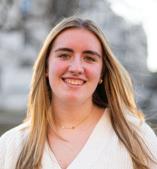
At a school with as successful a men’s basketball program as Villanova, other sports, especially women’s basketball, can be overshadowed.
It’s time we start giving the women’s basketball team the attention it deserves and Monday’s Associated Press Poll results should be enough of a reason for Villanova’s students to take notice.
Following an upset loss at Temple last Friday, the men’s team dropped from No.16 to unranked, falling out of the Top-25 for the first time since February 2019.
On the other hand, the women, coming off an upset over No. 24 Princeton on Friday, climbed their way into the Top-25 for the first time since 2018, stealing the Tigers’ previous 24th spot.
Now, this is not meant to take away from the success and history of the men’s program. The three national championships and six Final Four appearances speak for themselves, and no one is asking that any attention be taken away from them. It’s just time for that same energy to be invested into the women’s team.

Many students on Villanova’s campus have likely never been to a women’s basketball game at The Finneran Pavilion, and the justification is always that “no one goes” or that the “women’s team just isn’t that good.” But both of these are excuses, not reasons.
The first is easily avoided simply by more fans attending games. If everyone assumes that nobody else goes, then no one will ever go. It becomes a never-ending cycle that prevents the popularity of Villanova women’s basketball to grow.
The second excuse is
Letter from the Editors: Response to University of Virginia Shooting
Late Sunday evening, three students from the University of Virginia were shot and killed. Those whose lives were taken prematurely include Devin Chandler, Lavel Davis Jr. and D’Sean Perry, all of whom played football at the university.
Two other students were wounded and remain in the hospital. One student is in critical condition and the other in good condition. Only one of those students has been identifi ed as Michael Hollins, another football teammate.
As Americans have become accustomed to, messages of hope, peace and prayers have flooded social
media and news outlets.
Jay Wright, former Villanova men’s basketball head coach, shared his thoughts via Twitter on Monday.
“We are thinking of all those effected by these tragic events at UVA,” his tweet read. “Thoughts and prayers to the families of those lost – may they Rest in Peace.”
The messages may come with good intentions, but we must recognize as a nation and as community members of a fellow American university that thoughts and prayers are simply not enough. Lives that have barely begun continue to be taken day after day. This tragedy is
one of 68 shootings that have occurred this year on school grounds. There seemed to be hope of better gun reform following the passage of the Bipartisan Safer Communities Act previously this year. The bill made changes to federal firearms laws, including expanding background check requirements, expanding existing restrictions and establishing new criminal offenses. Funding was also designated toward mental health services particularly in schools, with the intention to keep children safe in the place of education. Yet, it seems to have failed the students at the University of Virginia and
the 68 other schools that have experienced gun violence and death this year. It is evidence that the policies we put hope and stock in are not as effective as we think.
As reports roll in about the suspect in custody for the UVA tragedy, we continue to try to make sense of how another tragedy could occur when warning signs were evident. It was announced that the suspect had been brought to the attention of campus authorities in September when he told an individual unaffiliated with the university about possessing a gun.
After a threat assessment, it was uncovered that the suspect had been involved

Continued on p. 2
Senior Year Housing Lottery Results Unveiled
Sarah Sweeney Co-News Editor
Two Fridays ago, campus was ablaze with more than the normal weekend excitement, with the results of the Senior Housing Lottery informing juniors whether or not they would be able to live on campus for their senior years.
The University guarantees housing for freshman, sophomore, and junior years. Senior year housing is only
Students React To Midterm Election Results p. 4
Augustinians of Villanova: Father Francis Caponi p. 10
guaranteed to students who are admitted to the school under a special scholarship or program, with the remainder of the seniors eligible to
CUP OF JOE: Senior Housing Was A Mess p. 5

Olivia Johnson: Equestrian World Champion p. 12
enter a housing lottery for the remaining spots.

This year, female students who entered the housing lottery and received
Satire: Living In An Oven p. 6
Anders Said It: Men’s Cross Country Is Best Team on Campus p. 13
a number between 1 and 286 were guaranteed on-campus housing for senior year. Consequently, they were eligible to participate in housing selection, which began on Monday November 7. The same was true of male students with lottery numbers between 1 and 235.
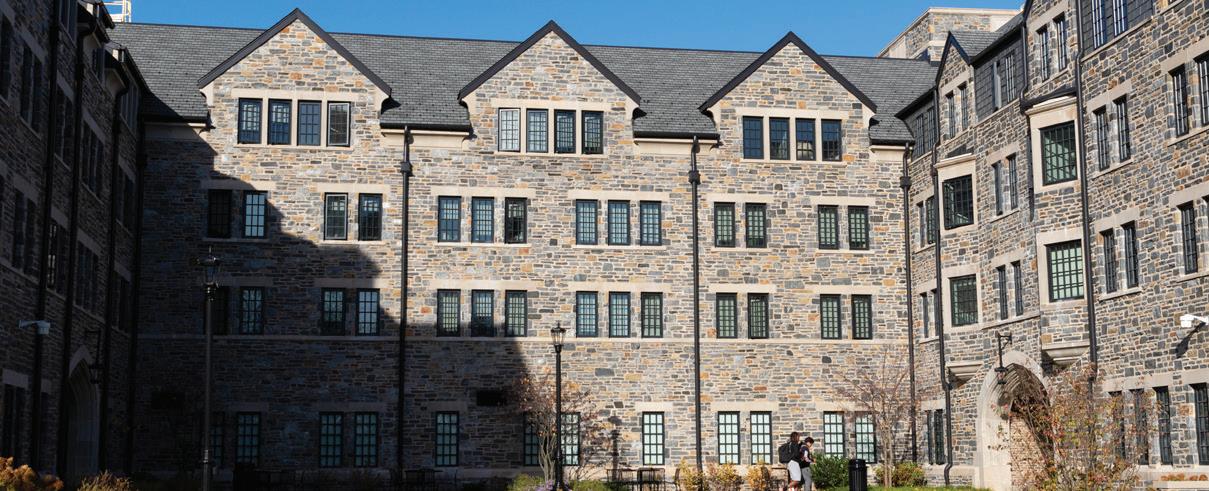
Seniors whose numbers fell outside the “cut-off ” were placed on the waiting list. Residence Life will reach out to students on the waiting list at a later date based on
Continued on p. 2

The Red Trickle: Why The Red Wave Never Came p. 7
THE BACKPAGE: Crossword and Ask The Villanovan p. 15
STUDENT-RUN SINCE 1916 WEDNESDAY NOVEMBER 16, 2022 www.villanovan.com @thevillanovan VOLUME 114 | ISSUE 21
Could Use Some Updates p. 8
Those whose lives were taken prematurely include Devin Chandler, Lavel Davis Jr. and D’Sean Perry, all of whom played football at the university. Brian Luppy/Villanovan Photography CLAS
Core Curriculum
International
Womens’ Rights Discussion p. 3
Amnesty
Hosts
Juniors were informed whether they would be able to live on campus next year.
12
Ryan Sarbello/Villanovan Photography
Continued on p.
THE BACKPAGE: Crossword and Ask The Villanovan p. 15
www.villanovan.com
COLIN BEAZLEY VIVI MELKONIAN TINA ARON CATE McCUSKER RACHEL REINIGER SARAH SWEENEY SARAH WISNIEWSKI LYDIA McFARLANE A.J. FEZZA ELENA ROUSE CHLOE MILLER MATTHEW RYAN MEGHANN MORHARDT MOLLY BAKER
OLIVIA PASQUALE
MICHAEL BRADLEY DEENA LEH
PUBLIC SAFETY BLOTTER
Liquor Underage/ Public Drunkenness November 11, MAIN CAMPUS GROUNDS
A male resident student and non affi liated male visitor, under the age of 21, appeared in public and was evaluated for alcohol intoxication.
Disorderly Conduct/ Hate Crimes November 11, ITHAN AVE.
Resident students reported unidentifi ed persons yelling racial slurs directed towards them from a vehicle on Ithan Ave.
Liquor Underage/ Public Drunkenness November 12, WEST CAMPUS GROUNDS
A female resident student, under the age of 21, appeared in public and was evaluated for alcohol intoxication.

Carrying a False ID Card/ Liquor Underage/ Public Drunkenness November 12, ST. MONICA HALL
A female resident student, under the age of 21, appeared in public carrying a false identifi cation and was evaluated for alcohol intoxication.
Criminal Mischief/ Theft By Unlawful Taking or Disposition November 12, DELUREY HALL
A resident assistant reported damaged and missing exit signs in a campus building.
Criminal Mischief November 12, HOVNANIAN HALL
A resident assistant reported a damaged exit sign in a campus building.
Liquor Underage/ Public Drunkenness November 13, STANFORD HALL
A female resident student under, under the age of 21, appeared in public and was evaluated for alcohol intoxication.
Theft By Unlawful Taking or Disposition
November 13, MAIN CAMPUS GROUNDS
A male resident student reported a theft of an unsecured non-motorized scooter valued at $80.00.
Simple Trespasser
November 14, HOVNANIAN HALL
A non affi liated female was found trespassing in a University Building.
CORRECTIONS
Factual errors are corrected as soon as they are brought to The Villanovan’s attention. Please send an e-mail to villanovan.eic@gmail.com to report errors.
villanovan.eic@gmail.com
UVA Shooting Editorial
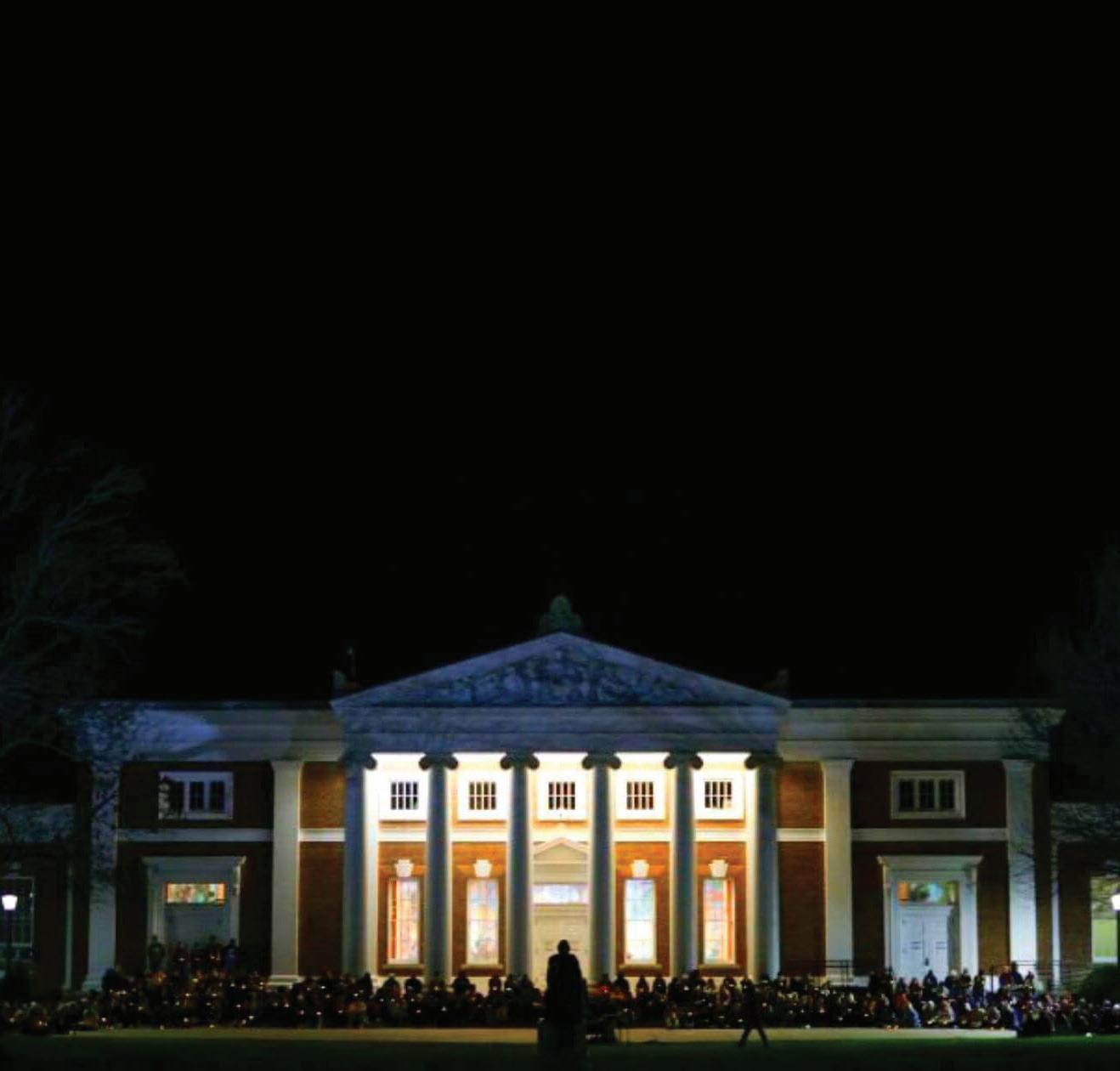
Continued from p.1
in a criminal incident involving a concealed weapon violation in February of 2021. The suspect failed to report the incident to the University. In addition, the suspect also was involved in a hazing investigation on campus that never reached a conclusion.
Again, we ask ourselves, with all the evidence presented, how can such a suspect go unchecked? These incidents need to be taken more seriously, followed up on and acted on accordingly. We cannot go on as a nation only reacting to these events. We must instead become proactive and take severe precautions to protect innocent lives.
The victims do not end with the three killed and two wounded. Students at the University of Virginia were sheltered in place for as long as 10 hours. Students shared images on social media of classmates hiding in basements, classrooms and dorms. Some even said they felt so unsafe to even attempt going to the bathroom.
Eva Surovell, a senior and the editor in chief of The Cavalier Daily, the University of Virginia’s student newspaper, told the New York Times about the experiences of students on campus.
“People are stuck in the
libraries, they’re stuck in academic buildings, they’re stuck in you name it,” she said.
Students from Villanova’s Class of 2023 may recall the unshakeable and terrorizing feeling of getting a shelter in place text, email or alert of an active shooter situation. On Sept. 2, 2019, a student had accidentally mistaken a bang in a freshmen residence hall as a gunshot.
The fi rst alert came in at 5:36 p.m. The original text alert read, “ACTIVE SHOOTER Incident Warning: ACTIVE SHOOTER on VU campus at St. Monica Hall, Shelter in place. Lock/barricade doors. More info to follow.”
By 6:13 p.m., the incident had been resolved as a false alarm and the shelter in place was lifted.
For 37 minutes, Villanova students lived in the fear that so many do while attending a school in the U.S. It is a feeling no one should ever have to experience, but when they do, it is undeniably never forgotten.
We hope to never forget the lives lost on Sunday. Simultaneously, we hope to see actual change in policy and in reform. Even further, we strive to see a change in American culture around the ownership of firearms. There needs to be a great shift in understanding that lives must be protected first before a weapon.

Senior Housing Lottery
 Sarah Sweeney Co-News Editor
Sarah Sweeney Co-News Editor
Continued from p.1
space available, following the University’s commitment to guaranteeing housing for the first three years.
Students were understandably anxious in the days leading up to Friday, aware that the random number they drew would have significant consequences – financial, social, and more.
This was not helped by Residence Life’s delay in announcing the results.

Residence Life initially planned to release the Lottery numbers on Tuesday November 1. Students, therefore, were confused when they checked their housing portal and saw no updates. Residence Life later emailed students explaining the delay.
“Currently,Villanova Residence Life staff members are working with our housing management
roommates, explained that they were not lucky enough to win the housing lottery.
“This has been a major source of stress for me lately,” she said. “My roommates and I have a room secured at the Villas, but I don’t have a car and would have to rely on shuttles and buses to get on and off campus, which is not something I want to do as a senior. I am grateful that we have a backup plan, so I will remain on the housing waitlist and hope some space opens up eventually.
“In a way I think this whole housing situation shows how Villanova fails to accommodate and care for its students properly. The lottery coming out late caused unnecessary stress on all students involved, and if they cared more about their students they would have been more open and honest about the process and the delays.”
Another junior echoed similar complaints about Residence Life’s communication with students.
“I believe that Residence Life did a poor job communicating with the students and explaining the lottery,” she said. “Only one girl in my group of four roommates was given a housing time. At first we believed that this meant that our whole group would get housing. However, Residence Life later sent an email and we realized the stipulation that those with housing times can pick only other students with housing times.”
software team to finalize this process. Lottery numbers will be available tomorrow, in the late afternoon,” the email stated. The numbers, however, were not available until Friday morning.

As a result, some students had an extra special start to their weekend, content with knowing they had a secured on-campus place to live for the year.
For students who entered in a pod with their preferred roommates and won the lottery, this was coupled with the joy of being able to live with their friends.
Other students, however, were not happy with the results of the lottery.
A current junior, who entered the lottery as a pod with her
“So many students are being forced to live with random roommates or forced off campus for their senior year at Villanova. This is not what any of us imagined for our last year at this university.”
“The number of rising seniors that can be accommodated on campus in a given year is contingent upon the number of guaranteed students and the number of total available beds on campus,” Skylor Morton, Director of Housing Operations for Residence Life, said. “Each year, Villanova is committed to offering on-campus housing to as many rising seniors as we possibly can. In addition to the lottery, we also monitor the housing waitlist throughout the course of the year as we receive cancellations.”
We hope to never forget the lives lost on Sunday.
Courtesy of SDGLN
“This is not what any of us imagined for our last year at this university.”
CONTACT 2 | The Villanovan News Opinion Culture Sports 1 5 8 12 VOL. 114 | ISS. 21
@thevillanovan Editor-in-Chief Editor-in-Chief Associate Editor-in-Chief Senior Editor Digital Editor News Editor News Editor News Editor Opinion Editor Culture Editor Culture Editor Sports Editor Sports Editor Copy Desk Chief Photography Editor Advisor Advisor
Wednesday, November 16, 2022
NEWS
Isabella Balian Staff Writer

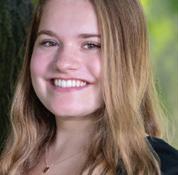
As a part of Immigration Week, Villanova’s Chapter of Amnesty International + No Lost Generation hosted a “Women’s Rights Discussion” surrounding women’s rights on Villanova’s campus and within the national and international scope.
Amnesty International is a worldwide organization that monitors human rights and campaigns to end abuses of human rights in more than 150 countries. Specifically, Villanova’s chapter focuses on the rights of migrants, refugees and asylum seekers and aims to raise awareness and educate the Villanova community.
The group aims to spark conversations on campus among indivdiuals who think diff erently than others about migration and human rights. They cover issues that aff ect migration including women’s rights, systemic poverty and more.
Members of the executive board hosted a group discussion this week explicitly focusing on the protests and human rights abuses happening in Iran and the debate regarding women’s abortion rights in America.
The leaders began the event by setting guidelines for the event, describing it as a “safe space for everyone,” and encouraging students to keep an open mind towards other students’ perspectives while being respectful of their own words. The executive board is committed to assuring that Amnesty International + No Lost Generation will not tolerate
hate and guided this discussion as needed.
“Students will have the ability to freely navigate conversations that involve such diffi cult realities,” co-President Elizabeth Isaula-Mejia said. “With discussions on women’s rights, climate change, immigration laws, refugees and asylum seekers, people can gain a space where they can fully express themselves while also receiving education and hopefully spreading awareness.”
The student leaders of Amnesty International began the discussion by giving a brief overview of the crisis in Iran, where Mahsa Amini was killed after the morality police detained her without giving an explanation. After giving an overview of the events in Iran, the student leaders posed open-ended questions to start the discussion, asking “How did the violence perpetrated specifi cally against women make you feel?” and “How can we make sure our eff orts to help cause more good than harm?”
Students responded empathetically and expressed how scary the events in Iran were and how unfair it is that women trying to voice their opinions are met with violence and death. Students discussed the importance of spreading awareness through social media and reposting things online, emphasizing that at this point ignorance of what’s happening is a choice.
Student leaders believed that it was important to touch on the international events of Iran and educate Villanova students on what is happening to women abroad.
“Although Villanova stu-
dents may not be directly impacted by international events, these can spark a discussion about human rights issues that exist around the world and in our country as well,” co-President Lillie Presti said. “This contributes to a greater message of maintaining peace in our world and working for more just societies and equitable rights for all.”
Student leaders then led the discussion to change gears toward discussing the overturn of Roe V. Wade and how this aff ects Villanova students and American citizens overall. They posed questions such as, “What do you think this decision means for the future of our women?” and “How does this decision aff ect your daily life?”
Students passionately responded, saying that this overturn will make it a lot harder for women to access reproductive health resources and that women of lower socioeconomic status are especially aff ected.
Additionally, students expressed concerns that abortion rights being taken away is a step back for America and that now people will have to work twice as hard to ensure equality for women.
Student attendees then shifted the conversation to their concerns about women’s safety at Villanova, believing that there are not enough resources for women, women of color and fi rst-generation college students.
Students began to express concerns about the lack of education on women’s equality at Villanova. Students described their experiences within Ethics classes at Villanova, stating that they rarely brush on abortion or Cath-
olic ethics, believing that Villanova can still relay its Catholic message while also supporting the safety and well-being of students.
Students posed an idea that Villanova ethics, theology and philosophy classes need to be revisited, introducing more relevant topics such as racism, food security or women’s rights.
Additionally, lots of female students expressed fear for their safety within college culture, fearing being sexually harassed or assaulted on and off campus.
Students participated in an effi cient and meaningful discussion of evaluating women’s safety and rights within America, and on Villanova’s campus.
“We still have a long way to go before Villanova becomes a truly inclusive environment,” treasurer Bonnie Pulla said. “While diversity can be seen in the populations of incoming students in recent years, inclusivity is a separate factor that Villanova still needs to work on. Discussions like this one bring us one step closer to inclusivity by ensuring that the experiences of students of color and immigrants on this campus are heard by white and privileged students.”
Overall, the event served as a great opportunity for students to express their opinions, share their experiences and learn more about women’s rights and safety in America and internationally.
“We were very excited with the turnout of the event,” secretary Trinity Rogers said. “A diverse group of attendees in terms of race and gender as well which is always great to have at these types of discussions. It was refreshing to have different points of view in such a candid conversation.”
Alumnus Cole Sternberg’s Artwork to Go on Display
telling its own story is nice as well.”
On Thursday, Nov. 3, an event was held in the Villanova University Art Gallery to unveil a new, cross-campus art exhibition for the work of conceptual artist and alumnus Cole Sternberg, ’01 VSB. His work is geared toward issues of sustainability and how humans interact with the environment, which this exhibition exemplifies. It is titled “thirsty while drowning,” and according to a press release issued by the University, it “addresses the existential harm of humanity’s interdependence with the environment while simultaneously submitting to the inevitable and inescapable consequences of climate change.”
Sternberg was excited at the prospect of showcasing his work at his alma mater, especially given how much change he has noticed on campus since graduating.
“It’s really rewarding and enjoyable to be back at Villanova and have old friends here to see how the school has grown,” Sternberg said. “When I went here, I didn’t even know the art gallery existed, so to see it get its own legs and start
Consequently, Sternberg wanted to make sure his work could resonate with students no matter where they were on campus, so his work is also being showcased in Bartley, Vasey and the Jake Nevin Field House. He worked with Jennie Castillo, Gallery Director and Curator of the University Art Collection, spending seven to eight hours walking around campus trying to decide how the pieces would come to life for community members.
Castillo noted that there are 10,000 works of art in the University’s collection, with her day-to-day responsibilities involving organizing those pieces and setting up exhibitions. She emphasized the importance of trusting artists and staying true to their vision when working with them, prompting her to give Sternberg the freedom to set up the exhibition as he saw fit.
“I think artists know their work better than I do,” Castillo said. “They have their own vision, and as long as they include me along the way, I trust them to do what they need [and want] to do.”
Regarding the exhibition itself, Sternberg’s process was unique, inspired by his travels on the maiden voyage of a shipping vessel across the Pacific Ocean. While at sea, he
threw one of his finished paintings into the water and allowed it to be pulled across the waves by the ship’s motion. He mentioned that “pulling [the painting] out felt like a miracle,” and when his brush strokes were replaced by the patterns created by the water, “suddenly the environment was the composer of the work.”
“I always wanted to travel across the Pacific because that’s the longest crossing where, at the time, you wouldn’t have cell phone coverage for a couple of weeks, you wouldn’t see land, and you wouldn’t see another boat,” Sternberg added. “I wanted the trip to be a part of the process of the work.”
As he perfected his process, Sternberg got to experiment with layers, mixing watercolor and acrylic paint and the method of pulling the paintings behind the ship, thus allowing him to produce the different pieces for the exhibition.
In addition to making his pieces aesthetically pleasing, Sternberg had larger goals for his work and showcasing it on campus.
“In general, I make these [paintings] to help push us forward and hopefully to inspire other people to make and do things,” Sternberg said. “With Villanova specifically, it’s for the students and exposing the students to artwork that they normally
don’t see. I love Villanova, and I loved my time here, but we weren’t really exposed to that much contemporary art on campus.”
Both Sternberg and Castillo were pleased with the turnout and the students who came in asking thoughtful questions. Castillo emphasized the importance of learning from artists like Sternberg, given how he graduated from the business school, studied and practiced law in D.C., then moved to L.A to eventually become an artist.
“When I was in college, I felt a lot of pressure to decide what direction I should go in, and I had a feeling a lot of students feel that way,” Castillo said. “I thought it was important for the students to hear that you don’t always have to do what you went to school for, there’s so many different paths that fall into the areas we’re interested in.”
Sternberg also offered advice to Villanovans no matter what future career path they are on.
“The exposure to diff erent kinds of thinking and visuals helps you grow in your own life and career at the same time,” Sternberg said. “My general advice is just to try to learn as much, see as much and travel as much as you can, and let that knowledge be refl ected in your life.”
Wednesday, November 16, 2022 The Villanovan | 3 NEWS
Katie Reed News Columnist
Discussion
Amnesty International Hosts Womens’ Rights
Preview: Back On My Feet 5k Walk and Run
Hannah Sweeney Staff Writer
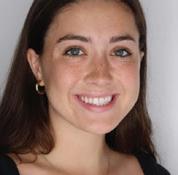
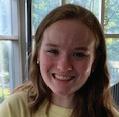
Next week, the club Back On My Feet will be hosting a 5K walk/run in collaboration with Hunger and Homelessness Awareness Week.
Back On My Feet is a national nonprofi t organization that focuses on combating homelessness through exercise and support from the community. Through fi tness, this organization fosters confi dence and independence and aids individuals experiencing homelessness in the process of fi nding employment, housing and education.
So far, Back On My Feet has more than 150,000 volunteers and has employed and housed more than 7,500 people, and it has collectively run over 950,000 miles.
Back On My Feet exists in 15 major cities across the country, with Philadelphia being the founding location. In collaboration with Philadelphia’s Back On My Feet, students at Villanova created their own chapter of this organization. Members of Back On My Feet Villanova drive into Point Breeze in Philadelphia every Friday morning and run/walk with community members. Through weekly runs and
walks, students are able to build meaningful relationships that help citizens experiencing homelessness get back on their feet. While running is benefi cial to physical health, the club focuses on the mental benefi ts of exercise.
Exercise in general is proven to improve mental health by releasing dopamine and other feel-good endorphins. These endorphins can lead to a person gaining self-esteem and confi dence in themselves and their abilities.
Not only does exercise increase a person’s well-being, but it also reduces anxiety, depression and social withdrawal, which can be common in people experiencing major stressors such as homelessness.
By getting up and moving, Villanova students and members of the Philadelphia community can motivate each other to better themselves and each other.
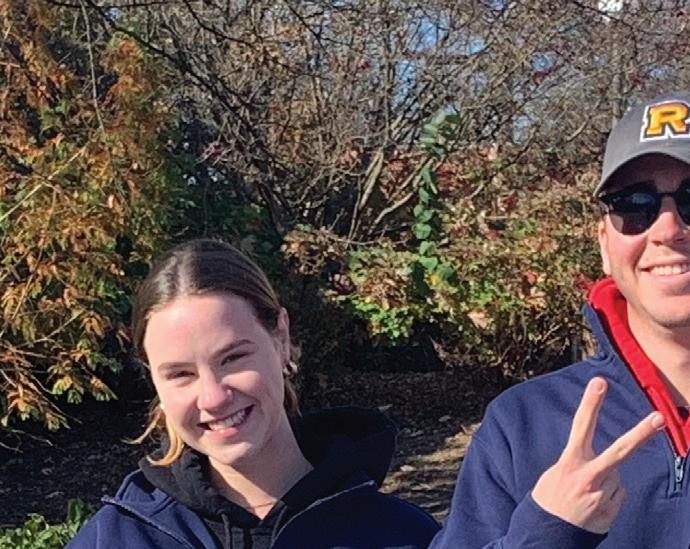
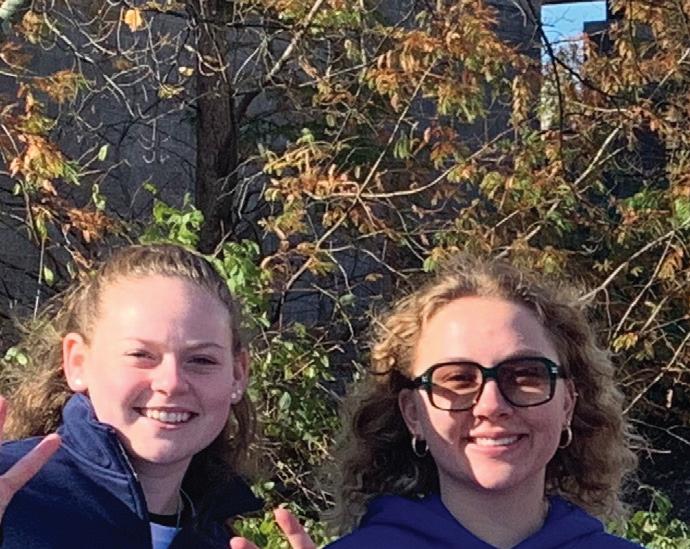
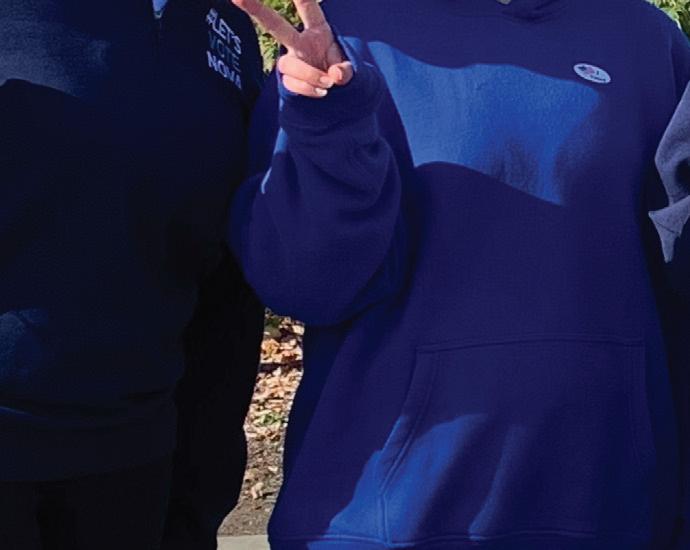
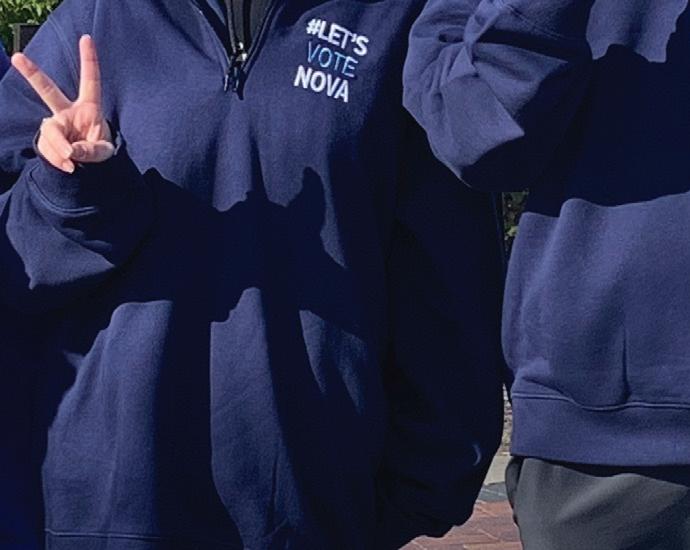

“This organization is my favorite club I am a part of on campus, and I am absolutely honored to be able to lead such a phenomenal group of people,” co-leader of BoMF Villanova Gemma Krautzel said. “The energy and compassion exhibited by members and volunteers even in the early morning hours is inspirational and exhilarating. The relationships I have formed with members have impacted me immensely as we have been able
to connect on such a deep and personal level. I am so proud of all that the volunteers do and the eff ort the members put into improving their lives.”
The upcoming annual Back On My Feet 5K will take place on Villanova’s campus on Friday, Nov. 18 at 3:30 p.m. The race will begin at the Oreo, with snacks and t-shirts given to participants. Tickets are $15 and all proceeds will go to the organization.
“The 5k will be an incred-
ible way to spread the word and mission of this organization, and I hope this run will inspire others to take part in our mission to combat homelessness,” Krautzel said.
To purchase tickets for a great cause, please visit https:// villanovatix.universitytickets. com/w/default.aspx. For more information on the organization, check out @bomf_villanova on Instagram or visit the national organization homepage at https:// backonmyfeet.org.
Students React to Midterm Election Results
Katie Reed News Columnist
The midterm elections have been on the minds of most, if not all, Villanovans for the past few months, fi nally coming to a culmination last week as results were announced and disseminated. Both major, hotly contested races saw the election of Democratic candidates to offi ce, with John Fetterman winning the race for a seat on the Senate and Josh Shapiro winning the race for Governor of Pennsylvania.
Senior Julia Boettigheimer, majoring in Political Science and History, shared her experience voting during the midterm elections. Though she is from Westchester, New York, Boettigheimer is registered to vote in PA, and this was her second time participating in elections here.
“I voted in PA for the 2020 Presidential Election,” Boettigheimer said. “That time, I got to the polls at 8 a.m., and the line was over an hour long. For the midterms, I went in the evening, and there was no line at any stage of the process. Overall, it was really easy and there were no complications.”
Boettigheimer was pleased with the results of the election, both in terms of voter turnout and the candidates who were elected. She also talked about the uncertainty of this year’s elections, which was discussed at length by one of her professors.
“Seeing the results was
defi nitely a sigh of relief, to an extent,” Boettigheimer said. “In one of my classes, we were talking about the fact that today’s elections are so unpredictable, and going off past trends, it would be expected for the party in power (in this case, Democrats) to lose a signifi cant number of House and Senate seats. However, massive voter turnout among young voters defi ed those predictions.”
This turnout gives Boettigheimer hope for the future, as people are starting to step up to have their voices heard and de-

mand change. “There’s still a lot on the line and an immense amount of work to be done, but I feel good knowing that young people are passionate about signifi cant issues that aff ect us all,” Boettigheimer said. “As of now, I’m cautiously optimistic about what we’ll see over the next two years, but if the same voter turnout trends continue, I have hope that the necessary changes will be made.”
Further, Boettigheimer already has some changes in mind that she hopes to see made at the
state level in the near future, as it has recently been incredibly difficult to implement changes at the federal level.
“Two of the largest issues at the moment are keeping abortion legal and protecting voters’ rights,” Boettigheimer said. “As SCOTUS cases are repealing these guarantees on a federal level, it’s going to become a debate for the states to settle. I hope to see states enact laws that protect reproductive freedoms for all people and guarantee that the right and ability to vote are not infringed upon.”
Boettigheimer also expressed the importance of exercising one’s right to vote, especially after seeing how voting turnout from young people has been instrumental in turning the tides in many midterm elections across the United States.
“I think that a lot of people feel like their vote doesn’t count, and if it does, it’s extremely insignificant,” Boettigheimer said. “However, as the past two major elections have shown, people have strength in numbers. Even if the candidate you vote for doesn’t win, the margins of victory don’t go unnoticed - your vote speaks, and voting is the fundamental basis of American democracy.”
Just because the elections are over does not mean that it is any less important for Villanovans to be informed about current issues in PA politics. As Boettigheimer suggested, it is important now, more than ever, for people to stay engaged and keep seeing what they can do to help change be made.
NEWS
The Back On My Feet group will host the 5k. Courtesy of Back On My Feet Villanova
Students volunteered on Election Day with Let’s Vote Nova to assist voters get to the polls.
4 | The Villanovan Wednesday, November 16, 2022
Courtesy of Allyson Levin
OPINION
CUP OF JOE: Senior Housing Was a Mess
Joe Adams Opinion Columnist
Villanova’s housing has offi cially been assigned to rising seniors, and students are unhappy.
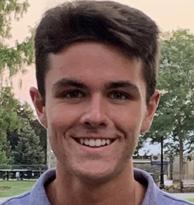


On Monday, Oct. 31, stu dents eagerly waited for the housing to come out, anxious to see if they got a spot on campus for next year. When the clock struck midnight and Tues day came, no message had been sent.
On Tuesday afternoon, Residence Life sent an update, stating that “Villanova Residence Life staff members are working with our hous ing management software team to finalize this process. Lottery numbers will be available tomorrow, in the late afternoon.”
Unfortunately for us, Wednes day came and went with no update on our lottery status. I felt frustrated and completely out of the loop.
Finally, on Friday, Nov. 4, the Housing website updated, and we got notified of our lottery numbers. Un fortunately for so many of my peers, that lottery number did not come, and they did not receive housing for next year.
This is frustrating on multi ple levels. Because housing selection started on Tuesday, Nov. 8, this gave students one weekend to figure out where to live off campus. The process has been confusing, and students have been scrambling to figure out what they are going to do next year.
Some roommates have even been separated from those who they submitted their contract with, which has been a huge frustration for many
students.
“We were told we would be entering the lottery as a group,” one rising senior said. “We got split up and only two of us got in.”
I got a lot of other information from rising seniors, as I asked people to reach out to me on Instagram with their experience with housing.
“The communication (or lack thereof) made me feel disrespected and forgotten,” one student said.
Another student noted that the “lack of transparency on the system” was frustrating, which was a common theme in the messages that I received. Someone else wrote, “I feel like I’m hearing different information from everyone. I am left all on my own.”
Another said there was a clear “lack of transparency on the system.”
This was concerning to hear, and it made me think of why there was not more housing available for
students on campus in general. Residence Life has released the following statement: “Villanova guarantees three consecutive years of housing to stu dents who enter the University as firstyear residential students. There are also a select number of seniors with Presidential and athletic scholarships that guarantee these students a fourth year of housing. In order for the Uni versity to honor this commitment to students, Residence Life is not able to guarantee housing to all seniors.
“The number of rising seniors that can be accommodated on cam pus in a given year is contingent upon the number of guaranteed students and the number of total available beds on campus. Each year, Villanova is committed to offering on-campus housing to as many rising seniors as we possibly can. In addition to the lottery, we also monitor the housing waitlist throughout the course of the
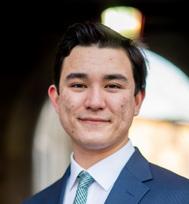
year as we receive cancellations.”
It is clear that with more people being admitted each year and bigger class sizes, housing is an issue that will continue to confuse people. The Commons, understood by many in the years since it opened in 2019 as meant for seniors, will increasingly be filled with underclassmen, with more and more seniors being split up or not given housing at all.
Other students voiced their concerns, with one rising senior say ing, “I hope they figure out housing by the end of the semester so seniors know if they have it.”
Many students also said that they did not realize they could be split up from their roommates in the process of the housing lottery.
“We were told that roommate groups entered the lottery together, but my group got split up,” one rising senior said.
“People should not have to compete with their own roommates for a lottery number,” another said.
I wholeheartedly agree with my peers. We were never told that we could be separated from our room mates for senior year, which differs from the previous housing processes. This is problematic because now, stu dents are stuck without many choices for their final year at Villanova.
It is evident that housing for seniors was a mess. Multiple friends told me that calling and emailing Res idence Life in the days following the housing lottery has not solved their issues. I hope that for the future, Res idence Life will change the housing process for seniors so they can have a stress-free final year on campus.
Taking Liberal Arts Classes as a STEM Major
da Luz Staff Writer
I have heard many different tunes concerning the importance of a liberal arts education. Some ar gue that it allows for a well-rounded education. Other proponents of the liberal arts offer that it helps to pre vent burnout, as a student does not devote all of their time and energy to a singular subject. Many more believe that it helps students to simply think for themselves.
However, every semester when registration rolls around, any positives are drowned out by the grumbles from my fellow liberal arts peers. It can make things a little annoying when picking courses begins to feel more like a to-do list, as stu dents have to incorporate classes and requirements in fields in which they may have zero interest.
It can be difficult to see clearly through the noise of so many cheers and jeers and take a holistic look at the merit of a liberal arts education. Throughout my early journey at Villanova, my relationship with the liberal arts education has been indica tive of this debate.
As a science major in CLAS, I have found that many of us share the same lament over the requirements that come with a liberal arts edu cation. It seems that science majors enrolled in a liberal arts education at
Villanova have a more difficult time fulfilling the requirements of the liber al arts education than arts majors.
Many of my friends in the arts can fulfill requirements like core social science, history, literature and writ ing seminars or diversity as a part of their majors. On the other hand, one would be hard-pressed to find a class in the sciences that does the same so easily. Arts majors at Villanova have to fulfill their science requirements outside of their majors as well as oth ers, but I would still argue that the un even distribution of requirements and the lack of availability to fulfill them in different majors present a problem in liberal arts education.
On the other hand, I think core requirements provide a more seamless transition from high school to college for incoming freshmen, as the multiple-subject approach allows
for some level of familiarity.
I actually do not appreciate the division of focus that comes with having classes and homework for multiple subjects. Having to devote time and energy to other subjects that are less applicable to one’s career can cause great frustration and contribute to burnout.
The absolute greatest praise I have for the liberal arts education is that it has allowed me to find my pas sions in different areas of life outside of my major. I have always enjoyed learning, but I had never seen myself as a creative writer. It was only in taking my ACS classes and my core literature and writing seminar that I realized this love.
I felt almost giddy at times writing papers, albeit at 3 a.m. like any good science major, typing away in Google Docs as I felt my thoughts
bleed out of my brain onto the screen. I investigated the work of Dante and Oscar Wilde, an atypical experiment that could not possibly happen in the test tubes and beakers to which I am accustomed.
My experience with these classes has driven me to write more and in different forms. I have contin ued to write for The Villanovan, sub mitted my work to literary magazines and reviews and have even embarked on personal creative writing projects in my free time.
I offer my experience but realize that it is definitely different from others. Some may be thanking their lucky stars day in and day out for their liberal arts education, while others probably abhor having to fit such classes into their schedule.
As registration has come and gone once again and stress levels have returned to a comfortable medium, I hope that my peers in CLAS are able to look at their schedules with some thing less than disdain.
Even though I feel some of the frustrations that can come with the requirements and structure of a liberal arts education, I would ulti mately argue that having to sprinkle in a social science or MSE does not spell the end of times. In fact, such a class might awaken a dormant passion inside of you. And if not, hopeful ly you will at least be able to quote something smart-sounding from Tolstoy at a dinner party.
The Villanovan | 5 OPINION Wednesday, November 16, 2022
The Commons house many seniors on campus each year. Ryan Sarbello / Villanovan Photography
Kai
The St. Augustine Center is home to the liberal arts offices on campus. Courtesy of OUS Magazine
EDITORIAL BOARD LETTERS TO THE EDITORS
COLIN BEAZLEY
VIVI MELKONIAN
TINA ARON
AJ FEZZA
Editor-in-Chief Editor-in-Chief Associate Editor-in-Chief Opinion Editor
The Villanovan encourages all members of the Villanova community to voice their opinions. Letters to the editors may be submitted via e-mail to villanovan.eic@gmail.com. Letters must not exceed 500 words and must be signed. No anonymous letters will be published. All submissions become property of The Villanovan and are subject to editing for clarity and space.
Satire: Living in an Oven
Isabella Ledet Staff Writer
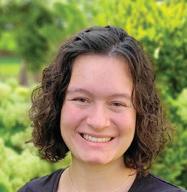

This article makes history as the first article ever written by a baked potato.
It has been one sweltering weekend, if I do say so myself. Wait, what was that? It was in the forties this weekend? Like, the forties in celsius? No? Fahrenheit? Well, I was living in an oven.
This past weekend, when it got up to 75 degrees outside, I was living in a room stuck at 80. I could not open the windows because the humidity would have only made it worse. So, naturally, I was bound to get a little cooked. And here I was, thinking my south-facing windows would keep my room a little warmer in the winter. The heat of the sun has paled in contrast to the heating of my floor.
The great thing about ovens is that they can be turned off. Usually, it is just by the press of a button. But for some reason, when we converted the technology of ovens to the technology of heating systems, we forgot that we could turn them on and off. In my dorm – sorry, oven – there is no middle ground. Warm air is pouring into the hallways and room nonstop. I am finding myself missing the loud, pollutant-emitting
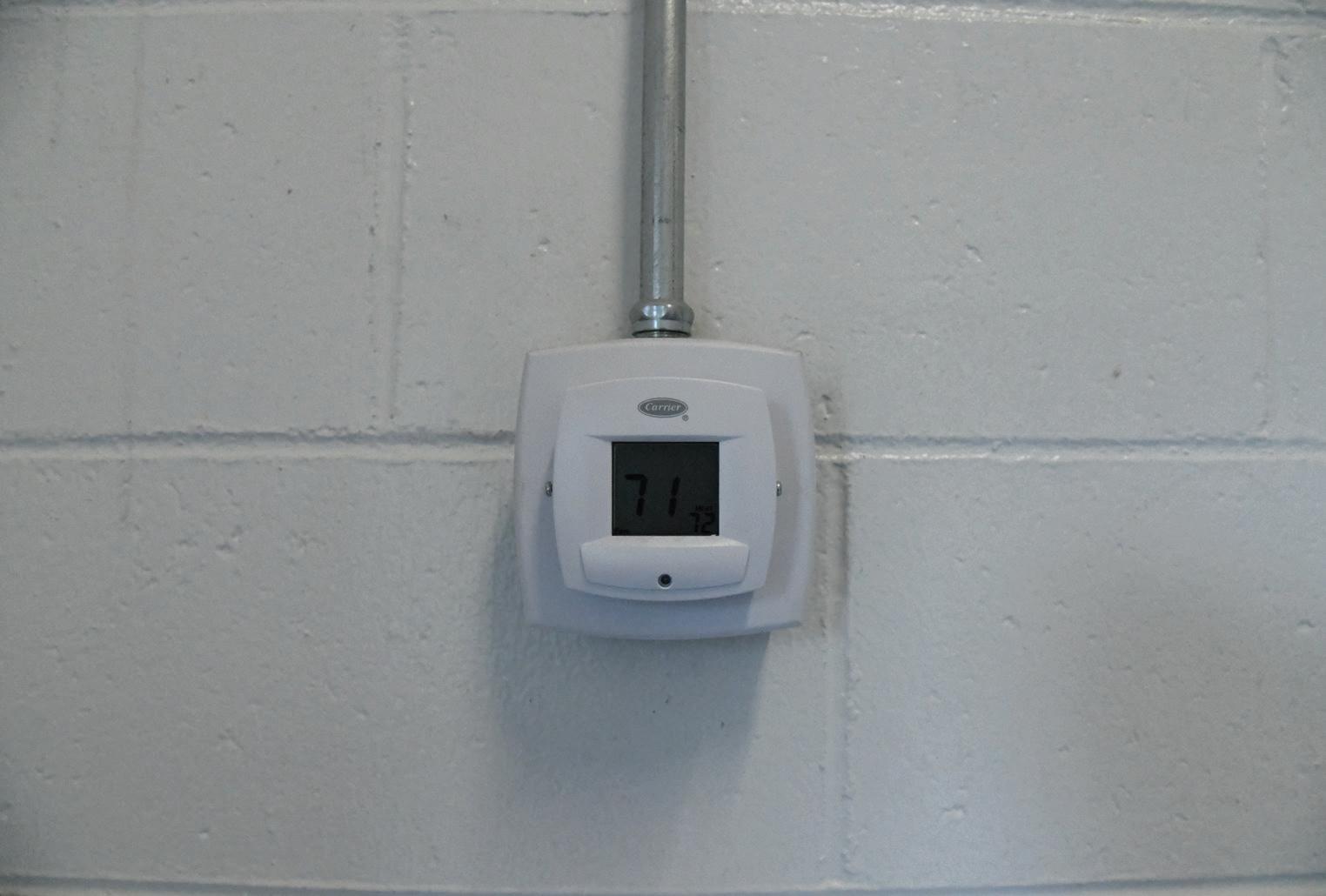
window box air conditioner that I had in my room last year. I had more control over the destiny of my room’s temperature. But even then, the control all ended when maintenance unplugged it for the season and we realized that the knob on the heater had fallen off and was eternally set to the highest temperature.
Ever wondered where those extra tuition dollars are going? Heating bills. Exclusively heating bills. It appears that the University is trying to break the world record for most money ever spent on heating. I know
Loghan Hirkey Staff Writer
POLICY
The unsigned editorial that appears is the opinion of The Villanovan as determined by the majority of the Editorial Board. Other columns, letters and artwork represent the opinions of their authors and do not necessarily reflect the position of The Villanovan.
tally become a part of a theatrical re-enactment of Hansel and Gretel where I have been shoved in an oven and must escape. If that is the case, I no longer want to be in this re-enactment. I would like to live in peace in a room that is a reasonable temperature.
The only good that I can see from this situation is that my room’s theme has finally been realized. My room is decorated entirely with a beach theme, from the posters to the decorations and even the bedding. Heating the room up to a balmy 80 degrees has finally completed the ambience. All I need now is for someone from the CEER construction site to dump some buckets of dirt all over the floor to simulate sand.
this because my dorm is not the only one that has been converted into an oven. There seems to be no reasonable explanation for the University trying to break this record. Nobody, not even a potato, was asking to get stuffed into a dorm-turned-oven. It is a shame that I have to open my windows when it is in the forties outside. I am letting out all of the air that someone is paying to warm. It simply does not make any sense.
The only other reason I can come up with for this sudden warming is that I have somehow acciden-
I never thought I would be sweating this much in the middle of November. Usually by this time of year, people are already talking about snow. In my dorm, I find myself talking about humidity and sunlight as if it were summer time. No wonder I am finding it so difficult to believe that Thanksgiving is only about a week away. It is definitely going to be strange when my room is decorated for Christmas and I must change into a t-shirt because I am boiling. Hopefully, things will be sorted out soon and I will not go from a baked potato to an overcooked potato.
Gym Hours Should Be Longer
Going to the gym has always been important to me. No matter the time or day of the week, whenever I have free time, I try to fit it into my schedule. However, during my freshman year, I was bummed to learn that the Stanford gym closes at six on the weekends. That may not seem like a big deal for some, but I typically work out at night. Therefore, I missed my gym time during the weekend unless I completely changed my workout schedule.
Villanova has four gyms that students can access around campus. The Davis Center is the biggest gym with the most equipment, located by the Finneran Pavilion. The Davis Center also has the best open hours from 7 a.m. to 12 a.m. Monday through Thursday, 7 a.m. to 8 p.m. on Friday, 10 a.m. to 6 p.m. on Saturday and 10 a.m. to 12 a.m. on Sunday. Throughout the second semester of my freshman year, I went to the Davis Center often because it accommodated my late-night workout schedule. However, I also used to live in Alumni Hall, and now I live in Jackson Hall on West Cam-

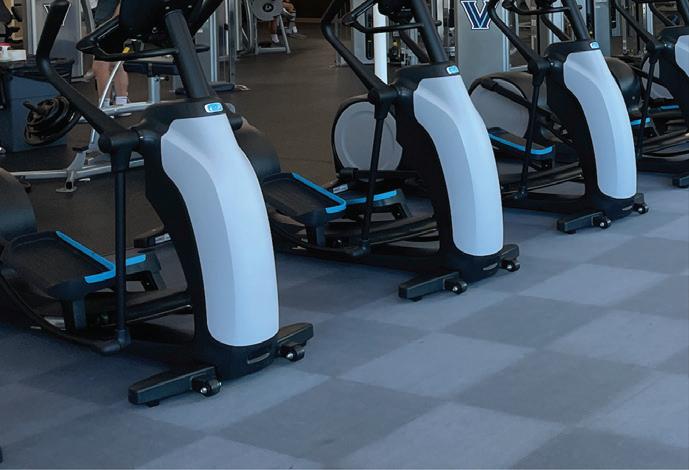

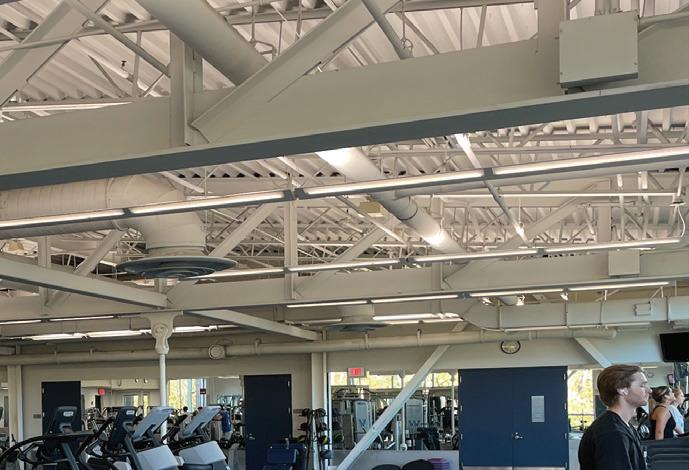
pus. I am really trying to avoid walking 15 minutes to the gym, working out and then making the walk back. So, my solution would be going to the closer gym, which is Farley. This is where the problems arise.
Farley, Stanford and McGuinn gyms all run on the same schedules. Monday through Thursday, they are open from 11 a.m. to 9 p.m., and Friday through Sunday, they are open from 11 a.m. to 6 p.m. This means the gym closest to me is closed during the hours I like

to work out, which is usually around 10 p.m. on any day of the week. I understand the gyms can’t be open 24 hours, seven days a week, but why can’t the other three gyms run the same schedule as the Davis Center for consistency, no matter where one lives on campus?
I understand most people do not work out very late at night; for example, at the Davis Center, when I go from 11 p.m. to 12 a.m., there are only a few people. However, if the other gyms extended their times
from 11 a.m. to 10 p.m. every day of the week, they would likely see people during those hours wanting to get their workouts in. The gym hours should accommodate every workout routine, even if it is a less popular time than a morning or afternoon workout.
Many students feel strongly about gym hours on campus.
“I want more time,” sophomore Sydney Barhite said. “The generic times just don’t work for everyone, especially for someone like me because of my rigorous schedule with engineering.”
“The hours are actually set for a very specific reason,” said junior Grace Manion, who offered her insight as a worker at the gym. “They take the data to see who comes to each gym, and since they are empty at certain times, they haven’t lengthened the hours. There also aren’t enough staff to cover the hours.”
If one is frustrated with the gym hours, it seems like it won’t be assessed anytime soon. Students can only hope Villanova hires outside staff to cover the hours some people are yearning for. For now, I guess I will be making the trek to the Davis Center if I want to continue my normal workout routine.
6 | The Villanovan OPINION Wednesday, November 16, 2022
Many residence halls have recently transition from air conditioning to heating. Gabi Frank / Villanovan Photography
Of the fitness centers on campus, the Davis Center is open for the most hours daily. Graydon Paul / Villanovan Photography
The Red Trickle: Why the Midterm Red Wave Never Came
Steven Makino Staff Writer

The 2022 Midterm Elec tions were expected to be a night that would set historic records as the Republican Party sought to regain control of both chambers of Con gress. Honestly, it had every reason leading up to Election Day to think that this would be achievable, with only the margin of its victories in the House and Senate up for debate. With a still high level of inflation, the likelihood of a recession next year growing, a border crisis that contin ues to build up and a president with a historically low approval rating of about 42%, the odds were certainly stacked against the Democratic Party. Indeed, the night made history – but in quite the opposite way than the GOP had hoped for, to say the least.
With the Senate guaranteed to remain blue with the narrow vic tory of incumbent Catherine Cortez Masto declared last weekend, it is safe to say that the “red wave” that was projected did not materialize – it was more of a red trickle. Even this is up for debate right now, as the Demo crats still have a fighting chance to hold the chamber, making for a truly historic performance for the party in power during the midterms. Control of the House, regardless of which par ty ends up gaining it, does not change the fact that Republicans greatly underperformed, especially given the many advantages they had on their side. I believe that their performance can be summed up in reasons, and it will offer key lessons for the Republi can Party (and even the Democratic Party) moving forward.
For one, these elections solid ified the notion that candidate quality still matters. Just because someone has a D or R next to their name does
not mean that they will be able to garner the votes needed for victory. It is true that in today’s ever-increasing polarized climate, more people than in the past will vote in the aforemen tioned manner. However, that just makes independent voters even more important. And this was shown given that a comprehensive survey from National Opinion Research Center (NORC) at the University of Chicago found that independent voters broke for Democrats over Republicans by four points nationally. This is in spite of the fact that 75% of Americans believe that the economy is head ing in the wrong direction and that President Joe Biden’s approval rating with independent voters was at 28%, according to an NBC News poll just two days before the election.
From that data alone, the fact that independent voters leaned towards Biden’s party by four points shows a flaw in the quality of Repub lican candidates across the nation. Herschel Walker and Dr. Mehmet Oz are great examples of this, as Walker not only has had no prior political experience but was also en gulfed in a bevy of scandals relating to his personal life, calling into ques tion his character. The allegation of him giving money to his ex-girlfriend for an abortion, his own son bashing him on him not being there for his children or family and the numerous amounts of gaffes and bizarre state ments on the campaign trail reflected in the polls as he received fewer votes than his opponent, Senator Rafael Warnock. Dr. Oz was perceived to be someone who wanted to run for Pennsylvania office while not truly being a Pennsylvanian. In addition, his unlikability rating remained above 50% throughout the duration of his campaign as many voters likely saw him to be untrustworthy as well as not being representative of the work
ing people of the state. There are also many other candidates who failed to appeal to the center such as Blake Masters, who repeatedly evoked for mer President Donald Trump’s name despite him losing the state in 2020, and Doug Mastriano, who was at the capitol on Jan. 6 and who had close ties with QAnon members.
Second, Trump’s influence was not as great in the general elec tion as it was in the primary season, showing that his unique appeal to his supporters only stretches to him as opposed to rubbing off on other candidates. It is worth noting that in competitive races on the national stage, Trump’s hand-picked can didates underperformed overall. Despite having his full support as well as the support of his hardcore base, it was not enough to make it over the finish line, especially given the trend of independent voters in this cycle. Even incumbent members of Con gress who are devout supporters of the former President, like Congress woman Lauren Boebert, faced an unexpectedly nail-biting race that still has yet to be decided.
Also, part of Trump’s appeal to many voters was the main ele ments of his 2016 campaign. In 2016, he campaigned against the establish ment Republican Party and spoke to concerns that very few politicians did in the past. His popularity was further cemented by the fact that he had been a well-known Democrat in the past and thus in the circle of many ce lebrities in Hollywood and prominent politicians on the Democratic aisle. Thus, when he announced his candi dacy and many of his former friends and associates cut ties with him, his case of taking the bullet for members of the Republican Party and even independent voters had much more merit than it would coming from any politician. However, following the
2020 election, he instead asked for his supporters to take the bullet for him, ranging from his false claims of voter fraud deciding the 2020 election to attacks on members of his own party. Not many people want to go back to the chaotic nature of 2020, contrary to Trump’s belief, which likely led not only to less turnout but also heavy motivation on the other side of the aisle with Trump’s name essentially on the ballot, despite it being a mid term election.
So, what does this mean? In short, the political center of the aisle won in these midterm elections. Republicans should choose better quality candidates in 2024 rather than ones who do not appeal to swing voters or moderates on the side. For example, in the state of Florida, there was a red tsunami with Florida gaining four House seats, Senator Rubio beating his opponent by 16 percentage points and Gover nor DeSantis beating his opponent by 20 percentage points, an incred ible feat. This is due to the fact that Florida has governed in a way that stays true to Republican ideals, while also appealing to independents and even moderate Democrats. This overperformance, as well as figures such as Governors Mike DeWine, Brian Kemp, Greg Abbot and more, show that President Biden’s success in the midterms is more so a referen dum of poor GOP leadership rather than a greenlight for his agenda. And since Biden stated that he is not likely to change course given the favorable results for his party, Republicans have an opportunity to learn from their mistakes and take a page from Florida and the aforementioned governors who easily won reelection. It’s really a matter of if they will take these disappointing results to heart that will decide future electoral suc cesses for the party.
When Does the Christmas Season Start?
Leah Cardinale Staff Writer
The world is divided into two factions: those who start Christmas celebrations Nov. 1 and those who wait until after Thanksgiving to start Christmas activities. So, that leaves us with the question: who is right?
Starbucks fans know that on Nov. 3, the chain released its yearly, highly anticipated Christmas drinks, and anyone who frequents the loca tion near campus can tell that there is no shortage of Christmas cheer inside. Christmas lights hang all around, the chalkboards are filled with winter drawings, each cup sports a Christ mas design and digital menus have a red and green background. So, if Starbucks says Christmas starts now, does it?
Villanova has not started dec orating for the holidays yet, but some students have gotten the ball rolling already. Sophomore Ryan Jordan discussed his Halloween- Christmas tradition.

“This year especially was ex tra special,” Jordan said. “Every year at midnight on Nov. 1, I listen to ‘It’s Beginning to Look a Lot Like Christ mas’ by Michael Bublé. On Hallow een night I had a bunch of friends over to my apartment and we waited
until midnight and then played the song, followed by lots of other Christ mas songs. We also decorated a small tree that I got for my apartment.”
Many people who feel Christmas celebrations start after Thanksgiving argue that celebrating Christmas too early overshadows Thanksgiving.
“My idea is that the Christ mas season is from Nov. 1 to Jan. 1,” Jordan said. “Some people complain that it’s starting too early and that I’m skipping Thanksgiving, but I believe that Thanksgiving is wrapped within the Christmas season. I play Christ mas music on the way to Thanksgiv ing dinner and throughout the whole
day of Thanksgiving. I’m not skipping Thanksgiving, I’m just wrapping it all into the Christmas season.”
Being that Villanova is an Augustinian Catholic institution, it is important to note that Advent, the liturgical season in preparation for Christmas, officially begins Sunday, Nov. 27. Since this celebration begins after Thanksgiving, it appears that Villanova would advocate taking one holiday at a time. Its Christmas events typically begin as soon as Dec. 1.
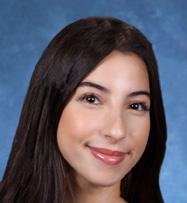
Freshman Reena Saraiya commented on the importance of Christmas after Thanksgiving.
“Thanksgiving is a time to reflect with your family on how the
year is going and what you want for the remaining part of the year,” Saraiya said. “Rushing through it and thinking about Christmas, which is still time for family, has you thinking about all the Christmas aspects such as gifts and lights rather than enjoying family time. Time goes fast, so you should enjoy every second, which means not rushing to Christmas and beginning celebrations/decorating before Thanksgiving.”
“I definitely have some strong feelings about Christmas,” sophomore Isabella Ledet said. “I consider myself to be a Christmas addict, so I do not like to give in to my addiction too early. The Christmas season for me starts the moment after Thanksgiving. Last year, I actually played Christ mas music in the car ride home from Thanksgiving dinner. I feel that start ing Christmas celebrations right after Thanksgiving gives the maximum length of celebration without it being too over-the-top.”
Personally, I think Christ mas starts after Thanksgiving. With Christmas comes the winter season, and I’d like to enjoy the harvest and fall feeling before rushing into a long, cold winter. Whether you prefer a pumpkin spice latte or a peppermint mocha, the holidays are coming and going to be celebrated (preferably after Thanksgiving).
Wednesday, November 16, 2022 The Villanovan | 7 OPINION
The University typically begins decorating for Christmas around the end of November. Courtesy of Villanova University
Thoughts on Fall Fest as a Local Program Host
Grace Janofsky Staff Writer
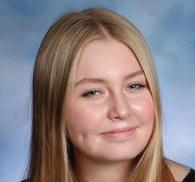
Arguably, many college students would not voluntarily wake up at 5:30 a.m. for an entire weekend. The exception to this belief is the amazing group of 112 people who I had the opportunity to be a Local Program Host (LPH) with.
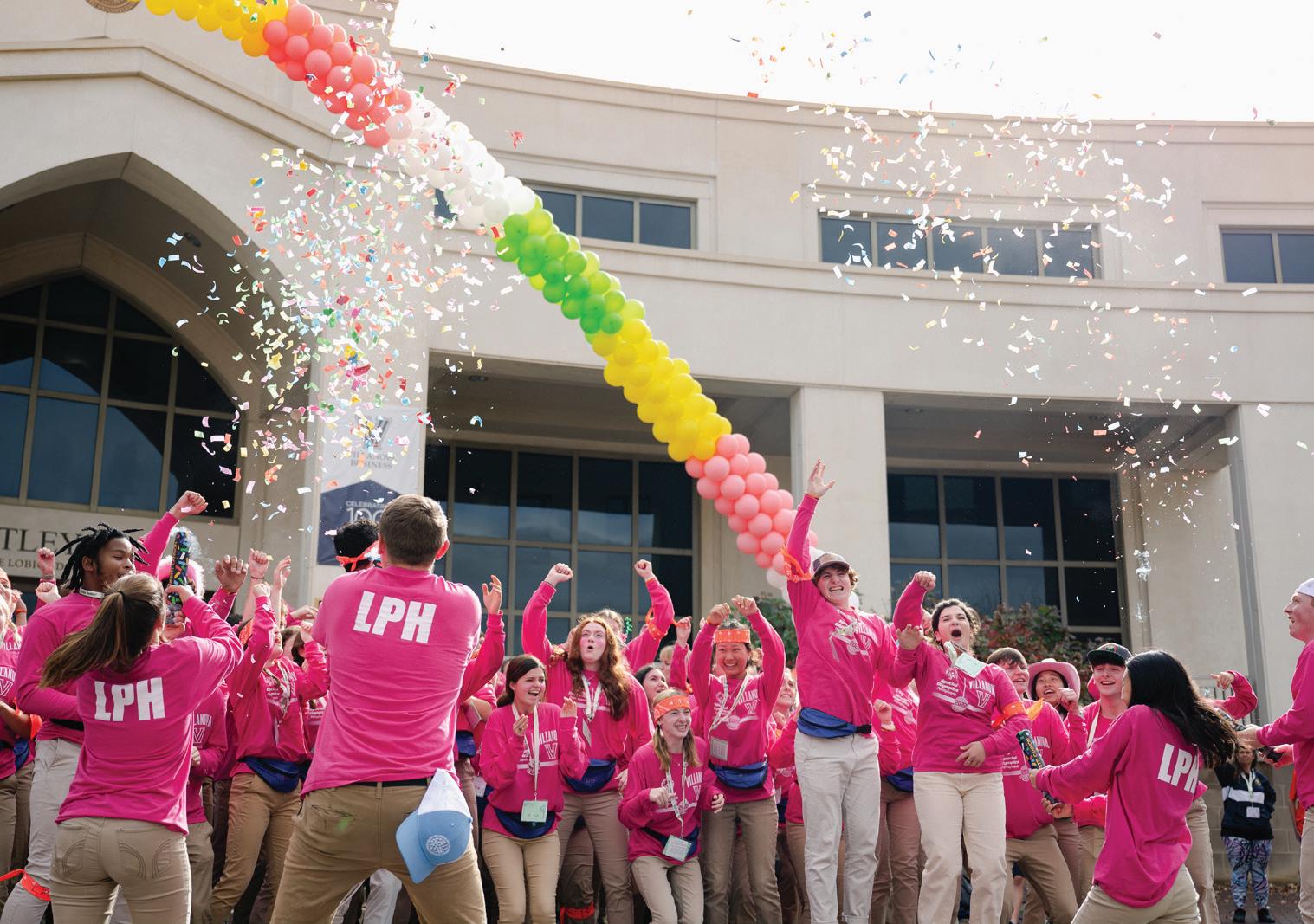
When considering what kinds of clubs and organizations I wanted to join coming into my freshman year here at Villanova, I knew right away that I wanted to get involved with Special Olympics in any way possible. Everyone who I had talked to told me to apply to be an LPH. Even people who had not been one were telling me they wished they had. I admittedly did not know much about the program prior to applying. However, I did anyway.
An LPH, also known as the giant groups of freshmen in pink shirts on Fall Fest weekend, are the hype people of Fall Fest. They are assigned to a county in Pennsylvania and get to know their athletes, cheer them on and support them. Despite not knowing much about what I was actually supposed to do at fi rst, our meetings did not disappoint. The excitement walking out of Cova after the very fi rst meeting guaranteed that Fall Fest would be a weekend to remember.
The week leading up to Fall Fest weekend was packed. We had
meetings every night to prepare for more than 1,000 athletes who were coming to campus. Excitement was through the roof even though we had no idea what we were getting ourselves into.
At one of our last meetings, our LPH leaders mentioned something called, “Fall Fest magic.” They said they could not even explain it and we would just need to wait and experience it for ourselves. I thought I had a sense of the “magic” and what the weekend would be like, but boy was I wrong.
Nothing could have prepared me for the electric energy everyone carried with them from
5:30 a.m. until 11 p.m. Whether it be from chanting in the quad and waking up every sophomore or blasting music while carrying tables to set up O-town at sunrise, every single person had a smile on their face.
LPHs were not only there to dance and hype people up, although we loved it, but we were also there for our athletes. Having the ability to eat meals with them and form long lasting friendships was the truly transformative part of the weekend. Being able to support athletes and know their stories is what made Fall Fest so amazing. The athletes truly felt supported by not only their teams but also all of
the volunteers.
On the last day of Fall Fest, there are typically gold medal games, which are similar to championships, and a lot of awards ceremonies. My fellow LPHs in my county (go Delco) bounced around from game to game to make sure we could support every one of our athletes who were playing that day. By the time it was around 10:30, we had all ended up at the gold medal soccer game for the Delaware Wildcats.
The game was so equally matched that it ended in a tie. Once in double overtime, there was a handball in the box resulting in a penalty kick. Although at this point in the weekend my voice was completely gone, I was still trying to scream as loud as I could. One of the athletes we had formed a really close relationship with that weekend, Tamba, was the one shooting the penalty kick. He got ready to shoot, ran up to the ball, aimed for the top corner and scored.
Like a scene out of a movie, he was ecstatic and screaming. However, before running over and celebrating with his teammates, he ran straight to me and my other LPHs on the sidelines, giving all of us hugs. It warmed our hearts to know that he felt it was right to celebrate with us at that moment.
There is no doubt in my mind that there is an unexplainable magic to Fall Fest, and we are all addicted.
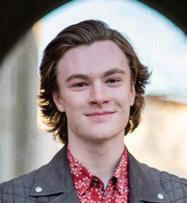
CLAS Core Curriculum Could Use Some Updates
Carter Smith Staff Writer
Class registration has rolled into town, and as a double-major in the College of Liberal Arts and Sciences (CLAS), there are a lot of courses I have to take in order to get my degree. A healthy chunk of that course load consists of the CLAS Core Curriculum. Many of my friends and I both in and out of CLAS have had many discussions about whether all of our requirements are actually useful or not, unanimously coming to the conclusion that they are not.
Requirements such as History, Math/Statistics and the Literature and Writing Seminar are widely useful for professional success over all fields and have lots of ways to fulfill them. Others like the Language and Natural Science requirements can be laborious to complete. They often pigeonhole students into taking courses that we do not enjoy, forcing us to give up slots we would rather fill with courses for our majors, minors or for fun.
The Language proficiency requirement is particularly oppressive. Fulfilling it with a Latin alphabet-based language (French, Spanish, Italian) will take four semesters, while so-called “critical languages” (Irish, Ancient Greek, Arabic, Chinese, Japanese, Russian) only take two. This requirement can only be circumvented by getting a four or five on an AP exam (only for languages offered by the university, leaving out popular languages
like German) or getting a very high grade on a proficiency test (which can shorten the number of classes necessary for requirement completion).
While I understand the University’s desire to increase the cultural competence of its students, having to take multiple semesters of languages that we will likely never use if we aren’t specializing feels like a waste of time to many of us: slots that could be filled with better courses.
Having an understanding of how the world around us works is vital to being an educated citizen, which is why it puzzles me that the Natural Science requirement feels like a slog to complete. The University does offer its MSE courses for non-science majors, which are more general and slightly easier than the BIO 1000s, but they still come with two to three hour labs in addition to meeting two to three times per week.
The lecture portions are the biggest classes most of us will ever take: 40 to 60 people are packed into one of the Mendel lecture halls to be shown slideshows for 50 to 75 minutes, boring students to tears. The labs do better in smaller class sizes but rarely do better regarding classroom engagement.
There is a large number of MSE courses in the catalog, covering anything from the chemistry of water to how humans fight cancer, but the courses actually offered for each semester rarely seem to meet demand. We often have to choose a course purely based on what our schedule allows, which is not neces-
sarily the one we find interesting.
So cool, the Core Curriculum is not optimized, but how should we update it? I have a couple of suggestions.
The Language requirement should be limited to proficiency in the introductory level or outright dropped; the people who are only taking language for the requirement probably forget most of their skills by graduation anyway.
With Natural Science, if there is no specific area of study required, the requirement seems aimless, especially when classes and professors are so hard to engage with. I would recommend a combination of more and smaller classes being available, dropping the requirement down to one semester and/or the creation of a “Science for the Modern World” class, which could be a crash course on concepts and specifics we need for everyday life.
I also have ideas for what those requirements could be replaced with. Everybody should have at least a basic understanding of economics. It is necessary to understand how money, businesses and government initiatives work, an opinion reinforced by my advisor Dr. Sarah Reed, assistant teaching professor of Economics.
“Basic economics courses help students to become more informed about common economic issues, such as recessions, unemployment and inflation,” she said. “They also help students develop critical thinking skills regarding economic decisions made by individuals, businesses and policymakers.”
Making the course “Introductory Topics - Economics” a part of the Core Curriculum is necessary in giving Villanova students crucial knowledge of economics, which is vital to being an informed citizen.
Another skill widely applicable for professional success is being able to clearly communicate your ideas and opinions to others, which is why I think Public Speaking should also be added to the Core Curriculum. Dr. Juanita Weaver, a senior instructor in the Communication department, was asked about the necessity of Villanova including a public speaking course in its core.
“I have taught at three other universities,” Weaver said. “One required it of every undergraduate, another required it in some form for all undergraduates and the third required it in their liberal arts program. It is a skill that crosses all disciplines. Employers rate it as one of their most desired qualities in employees.”
However, there is one problem with adding these courses to the core: professor availability. Both Reed and Weaver acknowledged that finding professors to teach enough sections of both courses to accommodate demand for the courses would likely be difficult, forcing these professors away from the more nuanced elective courses they love.
This article was born out of frustration with having to sit through required classes that not only have not piqued my interest but also have seemingly given me little information of value. Hopefully, the Core Curriculum can be updated to at least solve the second issue.
8 | The Villanovan Wednesday, November 16, 2022 OPINION
The Special Olympics Fall Fest was held on campus from Nov. 4 to Nov. 6. Olivia Pasquale / Villanovan Photography
CULTURE
Villanova Student Theatre Production of Macbeth

 Brendan King Staff Writer
Brendan King Staff Writer
Shakespeare may not have written any plays since the 1600s, but his works are as relevant as ever at the John and Joan Mullen Center for the Performing Arts.
The Villanova Student Theatre’s production of “Macbeth” premiered in the Mullen Center’s Smith Performance Lab on Friday, Nov. 11. This is VST’s first production of the 2022-2023 school year.
The story of “Macbeth” follows the titular Scottish character as he is met by three mysterious witches who claim that he will become king. What follows is a show filled with desperation, betrayal and murder. Junior Monroe Byer stars as Macbeth in VST’s adaptation.
Villanova’s production of “Macbeth” is directed by Amanda Coffin. A graduate of Villanova and Production Manager for the Theatre department, this show marks her first time directing for VST. However, this is far from the first time she has been involved in a production of this Shakespeare classic.
“I know this show really well,” Coffin said. “I’ve done it many times. I have directed it previously, I’ve been in it previously and I’ve done sound design for it previously.”
Although Coffin has worked on productions of “Macbeth” many times, she still felt a great level of excitement when she got the opportunity to direct it for VST.
“It’s exciting to come back to
it, and now that I’m a staff member in the Theatre department, it’s really fun that I’m coming back to the same show that I was so familiar with when I was a grad student,” Coffin said.
VST worked hard throughout the entire semester to make sure its rendition of “Macbeth” was a success. Rehearsals occurred three to four days per week over the course of multiple months.
“September, I believe, is when we started rehearsals, and it’s now November, so it was a pretty prolonged process,” Coffin said. “Three to four days a week with some weekends that were longer to just sort of run through. And then ‘tech week,’ which has been the past week-and-a-half, is really extensive. Every single day we’re here running the show or working to add technical elements.”
Though the performance is mostly a faithful adaptation of the Shakespeare original, Coffin described how there were some differences made in VST’s version in order to keep the story fresh and understandable.
“For me, it’s about finding the storyteling that is the strongest,” Coffin said. “I do think that there are moments in every Shakespeare play that are confusing. When you have a lot of characters, the audience can find it difficult to track who those characters are, and we had a smaller cast for this show. We had 15 people.”
With a seating capacity of only around 75, the Smith Performance Lab is hardly the size of Shakespeare’s Globe Theatre. That being said, many stylistic and technical elements had to be put in place to ensure a successful
production in such an intimate setting. For instance, there is only one main set used for the show, with a handful of props used to differentiate the multiple settings and locations within it.
“It was a challenge to stage it in this space, and I knew from the beginning that we wouldn’t have a lot of space to keep a lot of furniture backstage or change from scene to scene, so I made the decision early on that we were primarily going to work with one setting and have furniture onstage that could move and that could be brought forward,” Coffin said.
Other solutions to potential issues caused by a relatively small amount of space included having the actors go “out into the hallway” and “underneath the seating risers” in order
to get from one side of the stage to the other.
Overall, Coffin believed that opening night was a success and was proud of the work that the cast and crew put into the production.
“They did a great job,” Coffin said. “They’ve been ready for an audience for a couple shows now, so it’s really nice to see them feel the energy of the audience. I think they’re only going to continue to settle and get better the more it goes.”
VST’s production of “Macbeth” will continue to be shown in the Smith Performance Lab until Sunday, Nov. 20. In addition, plans are underway for the production of Treasure Island in the spring semester.
SAMOSA Puts on Zindagi Performance for Charity
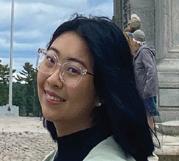 Yulin Mao Staff Writer
Yulin Mao Staff Writer
On Nov. 12, the South Asian Multicultural Organized Student Association (SAMOSA) put on Zindagi .

SAMOSA organizes events every year to raise funds, and Ticket proceeds are donated to charities.
This year’s recipient is Save the Children India, a NGO to help improve the lives of underprivileged children by aiding them in getting access to healthcare services and quality education. This year, the show raised $7000.
Zindagi refers to “life” in Hindi, and is the core focus of the show. At the opening, the two SAMOSA Co-presidents Julie Mathew and Pragya Ajmera gave good news: the show sold out for 600 seats. In an interview, Mathew and Ajmera shared that, due to the high number of attendees, they had to maximize space and reserve as many chairs as possible.
Zindagi consisted mainly of skits, a capella and dancing performances, with teams from various universities performing. Rutgers University, University of Delaware, University of Pennsylvania, Columbia University, St. Joseph’s University, as well as two of Villanova’s own dance groups: Superlatives and Nova Nassa, appeared at the show.
After the show, many students expressed their love as fans of NOVA NASSA.
“Their moves were so powerful, it felt like the audiences were all lit up,” A student in attendance said.
“Their clothes were stunning.” Another student shared.

One audience member with dance experience described her enjoyment of the shows.
“Their choreography combined dance genres like hip-pop with Indian dance, presenting a perfect mix of modern and classical.”
Students from Delaware Kamaal shared that they referred from Bollywood fusion dance.
“We really try to channel our emotions through the songs.” Delawares students shared. “And the rehearsal of the whole dance took about two months from summer.”

Another scene was the fashion show. Freshman Sasha Shanker participated in the fashion show. She bought her saree while she was in India and it was the first time she wore it
“When my parents heard about the event, they were like, ‘You should wear it to the SAMOSA show,’” Shanker said.
Another scene, one that seems to tie the show up together, is a light-hearted skit about school life. The main characters go through a friendship crisis, then get back
together.
Freshman Majo James played a dad urging his son to find a girlfriend in the show.
“My favorite part of the show, selfishly, is my own scene,”
James said. “I love the chemistry I have with the son of the scene.”
Zindagi both focused on those in need and was a great platform for cultural presentation, and SAMOSA’s performances prove it.
CULTURE Wednesday, November 16, 2022 The Villanovan | 9
Students in Macbeth performed on a successful opening night. Courtesy of @Vstheatre Instagram
Students gathered to perform during the Zindagi performance.
Courtesy of Steven Sun
Beta Theta Pi’s Miles for Molly and Colly
Julia Stanisci Staff Writer
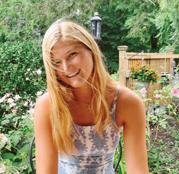
This past weekend, on Nov. 12 and 13, Villanova’s Beta Theta Pi fraternity held its annual “Miles for Molly and Colly” philanthropy event, consisting of a 10+ mile run and Egg Toss competition to raise money for Rett Syndrome research.
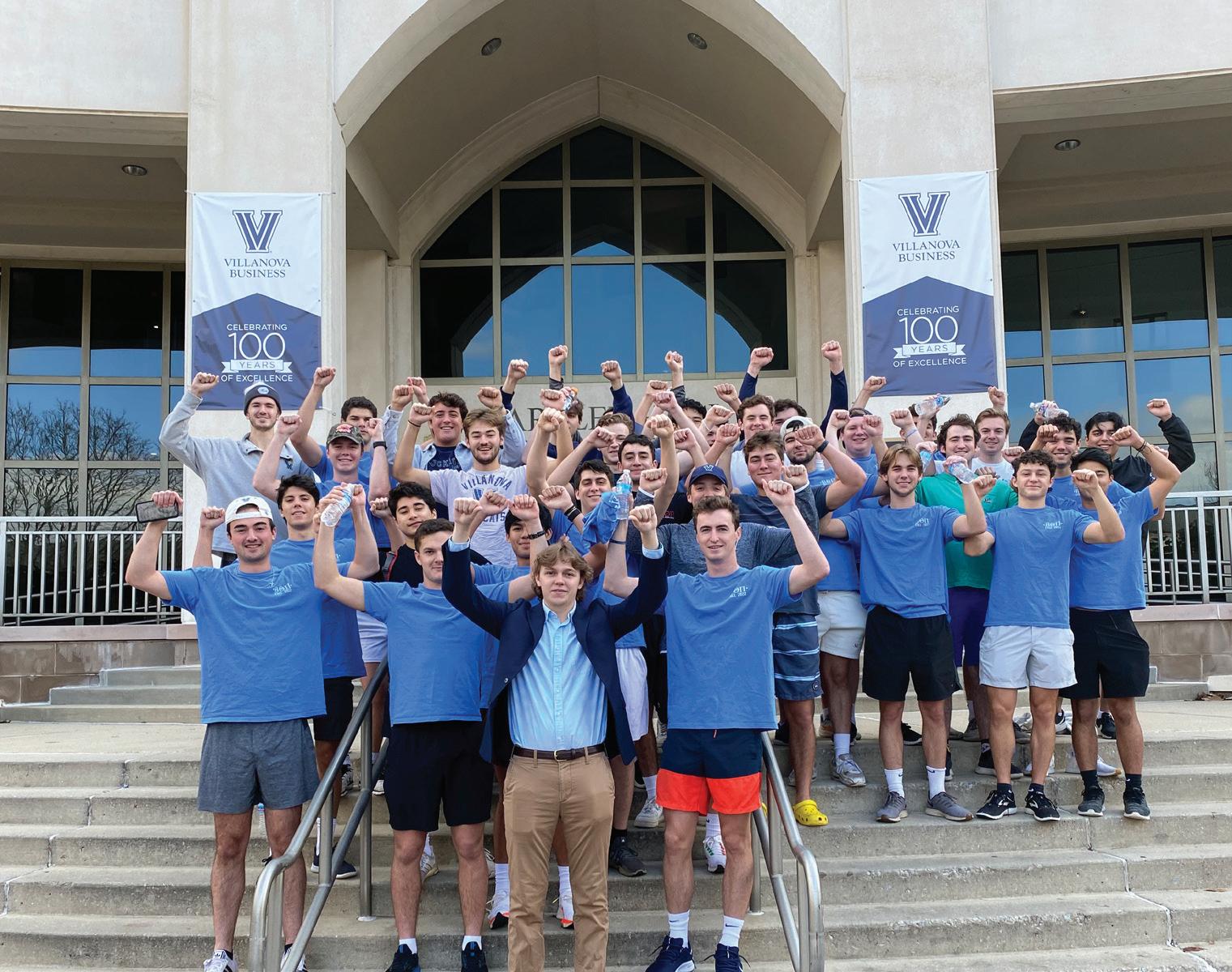
The 2020 event was one of the most successful fundraising efforts Beta and Villanova Greek Life overall had ever seen, raising more than $20,000 for Rett Syndrome Research in just one day. Because of this, the fraternity chose to make the run an annual tradition, completing the third Miles for Molly and Colly run this past Saturday.
Rett Syndrome is a rare genetic mutation on the X chromosome affecting brain development primarily in girls (and even more rarely in boys). The disorder leads to severe impairments that affect nearly every aspect of life including walking, talking and eating. Beta has a personal connection to the cause because chapter alumnus, Greg Foley ’04, has a 10-year old daughter, Molly, who lives with Rett. Recent graduate and Beta member Aidan Ferdinandsen ’22 has a 14 year old brother, Collin, who also lives with Rett. All proceeds from Beta philanthropy events go towards the Rett Syndrome Research Trust, which is continually performing cutting
edge research and recently got FDA approval for a gene therapy, which is currently in clinical trials for treating the disorder.
In honor of Molly and Collin, Miles for Molly and Colly was started in the fall of 2020 as a way to fundraise for Rett Syndrome research in a socially distant manner during the COVID-19 pandemic. The original event consisted of Beta members running around the Villanova and greater Philadelphia area, with brothers collecting donations along the way from friends and family members with
live updates through Instagram, Snapchat and Facebook. Donations came in either lump-sum payments or per-mile pledges, giving brothers the extra incentive to run as far as possible. Many brothers even ran all the way to the Rocky Steps at the Philadelphia Museum of Art on a route the distance of a half-marathon.
This year was another successful year for this fundraiser, as members of the fraternity ran more than 250 miles total and raised thousands of dollars for Rett syndrome research.
Several members made it all the way to Philly again this year, including sophomore Jake Macaspac.
“A group of us planned on running from Villanova to the Rocky Steps in Philadelphia, which rounds out to the distance of half a marathon,” Macaspac said. “Knowing it was for such an important cause, I thought I could test if my cross country days were still in me. It turned out well, and I couldn’t have done it without the encouragement of the guys. I’m honored to have participated in the event this year.”
Senior Emmet Scanlon has served as Beta’s Philanthropy Chair and coordinated Miles for Molly and Colly for the past two years.
“I am very happy with how this year’s event turned out,” Scanlon said. “With minimal training and preparation, about half of the fraternity was able to make it over five miles, a quarter made it over 10 miles and five bold brothers ran a complete half-marathon ending at the Rocky Steps. In total, Beta ran over 250 miles on Saturday, and we are on track to meet our fundraising mark of $11,000 dollars set at last year’s event. I am very proud of what we were able to do this weekend, and I think our personal connection to Rett Syndrome in Molly and Colin is what gets us to keep running and why we have been so successful in our Philanthropic efforts the past few years.”
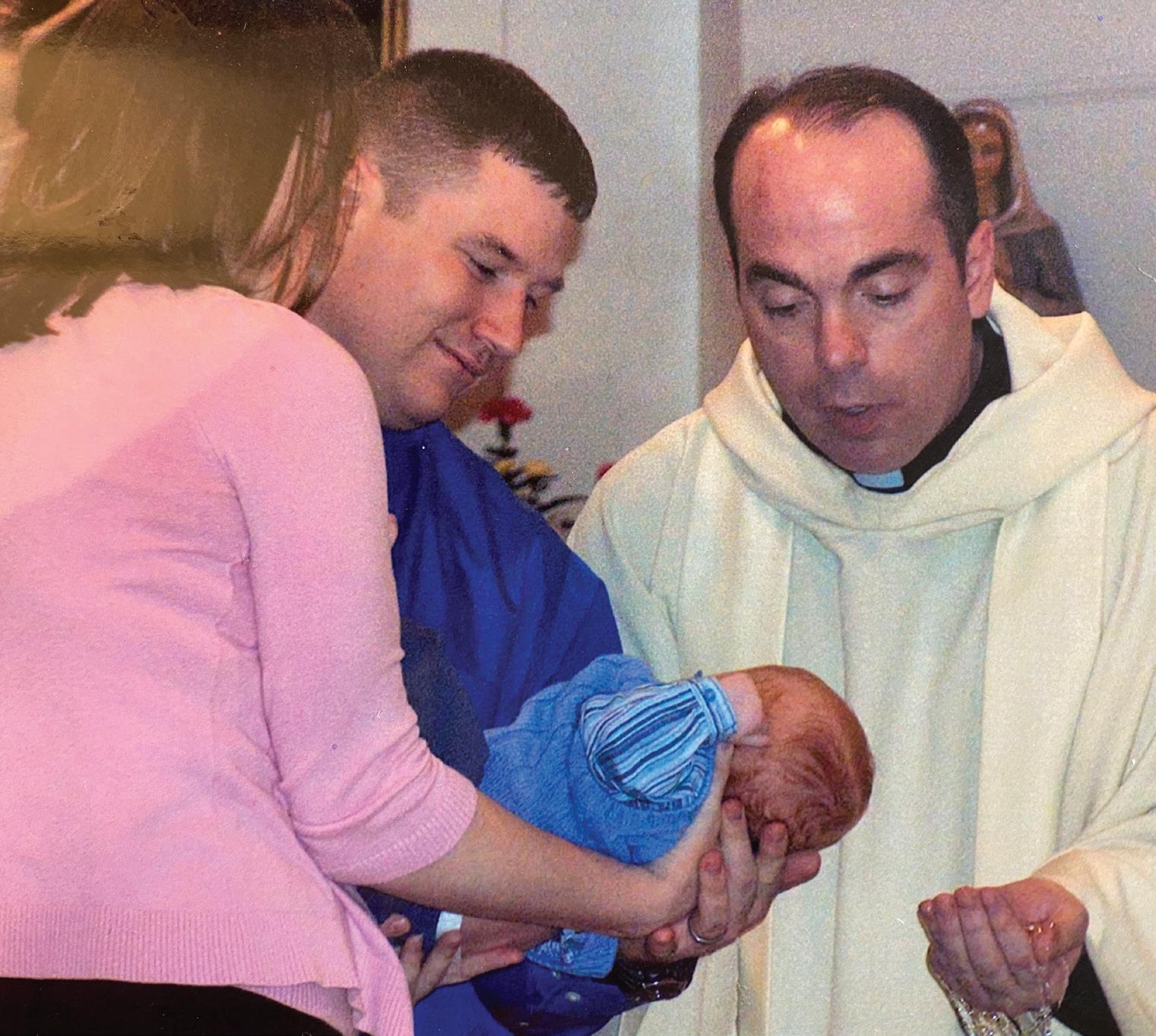
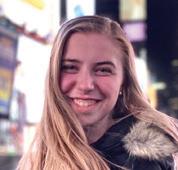
Augustinians of Villanova: Father Francis Caponi
Olivia Sabalaskey Staff Writer
“I grew up in the Philadelphia area,” Father Francis Caponi, O.S.A., said. “It’s so nice to be back, close to my family, especially as my nieces and nephews grow up.”
This week, Fr. Francis offers Villanovans a glimpse into his life as an Augustinian at Villanova in the Augustinians of Villanova Column.
Like many other Augustinian priests at Villanova, Fr. Francis attended Monsignor Bonner, an all-male Catholic high school and was taught by Augustinians. During his four years at Monsignor Bonner, Fr. Francis was deeply inspired by his Augustinian teachers. In fact, Fr. Francis thought about becoming an Augustinian priest, particularly during his senior year. Although he enjoyed his high school experience and gained substantial insight into the Order of Saint Augustine, Fr. Francis was eager to step out of his comfort zone.
“By the time I graduated, I wanted to get as far away from the Augustinians as I could,” he said. “Monsignor Bonner was enough for me then. So, naturally, I wound up coming to Villanova, an Augustinian Catholic school. It probably wasn’t the best idea.”
During his undergraduate years at Villanova, Fr. Francis commuted to campus. Although he never got to experience living
in a typical dorm setting, about 20 other Monsignor Bonner graduates also commuted to campus. Unlike today, in the early 1980s, almost half of Villanova undergraduates commuted.
After receiving his bachelor’s degree from Villanova in 1983, Fr. Francis continued his education, obtaining a master’s degree from the Washington Theological Union in 1989 and a doctorate from Harvard University/School of Divinity in 2000. After much deliberation, Fr. Francis pursued his calling from God and was ordained an Augustinian priest.
“During my fi rst 15 years as an Augustinian priest, I served in a parish in upstate New York, right at the border with Vermont,” Fr. Francis said. “I also taught in Washington D.C. at the seminary for seven years.”
In 2005, Fr. Francis returned to Villanova, answering the Augustinian call to serve others and teach undergraduate students. More specifi cally, Fr. Francis taught the Augustine and Culture Seminar, commonly referred to as ACS, as well as Faith, Reason and Culture, the introductory Theology course. Both classes are typically taken during an undergraduate’s freshman year and they are meant to introduce new Villanovans to Augustinian academia, the Catholic faith and Villanova’s campus.
“I currently live in Caughlin Hall on South Campus,” Fr. Francis said. “It’s typically re-
ferred to as the Honors dorm, Although previously I just taught ACS and Theology courses to freshmen, I now work with the Honors Program.”
Not only is Fr. Francis an Associate Professor for ACS, Theology & Religious Studies and the Honors Program, but he also serves as the Honors Chaplain in Caughlin. Caughlin residents are able to receive both spiritual and academic guidance from Fr. Francis during their freshman year, and he frequently off ers the sacrament
of Confession as well.
Like many Villanovans, Fr. Francis is very involved in student organizations on Campus.
“There are a number of groups I work with,” Fr. Francis said. “I’m very involved with the Knights of Columbus. I serve as an advisor, helping them with spiritual direction and scripture study on Tuesdays.”
Fr. Francis celebrates a weekday Mass often at 5:30 p.m. in Corr Chapel. All are welcome to attend.
Wednesday, November 16, 2022 10 | The Villanovan
Members of Beta Theta Pi celebrate after a successful fundraiser. Courtesy of Emmet Scanlon
Father Francis says Mass at 5:30 p.m. in Corr Chapel one weekday a week. Courtesy of Fr. Francis Caponi, O.S.A., Th.D.
CULTURE
Julia Stanisci Staff Writer
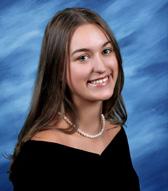

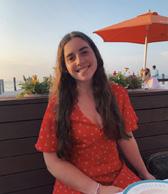
On Nov. 9 and 10 at 7 p.m., the Performance Studies Area in the Department of Communica tion presented its second show of the Fall 2022 season, titled “Body Talk.” Nearly 100 audience members gathered in the Garey Hall Black Box Studio to see the performance, written by senior Communication major Harry Wasnak and co-directed by Wasnak and Dr. Evan Schares, Assis tant Professor and Coordinator of the Performance Studies Area.
“Body Talk” poetically explored bodily controversies sur rounding disabilities, sexualities and racialized identities. The show was conceived through a series of inter views conducted by Wasnak over the past summer. Several individuals shared their experiences with Wasnak of bodily marginalization and grant ed permission for their stories to be turned into monologues.
The show used the method of ethnography and was an exercise of
Harry Wasnak’s “Body Talk”
ethnographic performance, in which performers embodied experiences and/or social locations that differed from their own. It featured nine unique monologues, performed by an ensemble featuring Wasnak himself, sophomore Ava Studivant, sopho more Shamar Long, junior Frankie Frabizzio and junior Grace Dwyer.
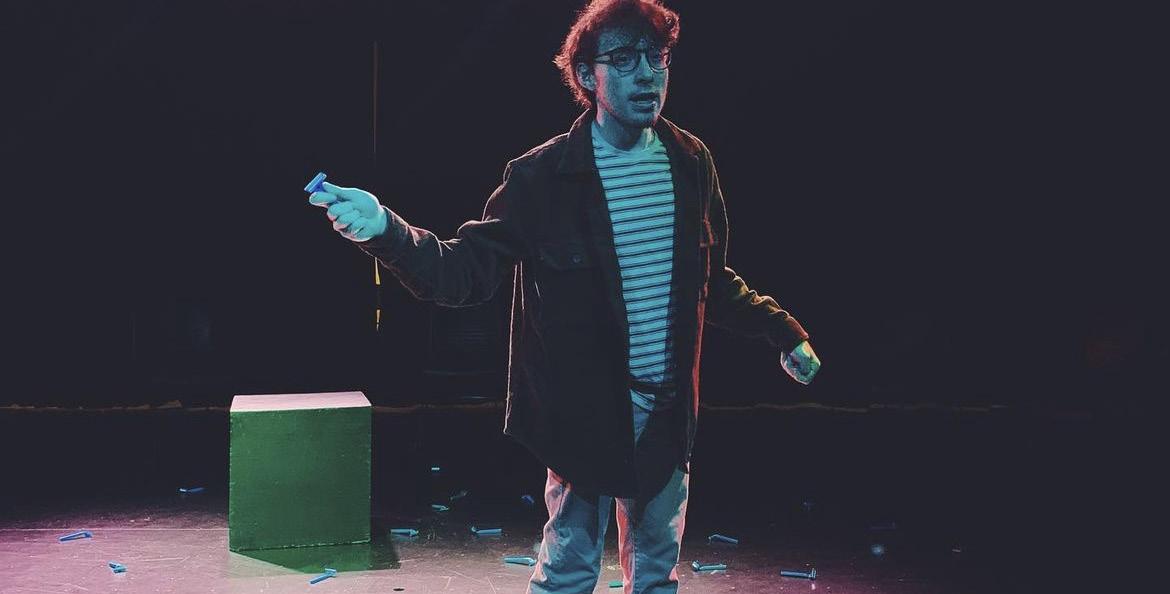
Each monologue told the true story of an individual interviewed and the ways in which they have been marginalized at Villanova and beyond because of their disability, sexuality or race. Through viewing these monologues, attendees were able to better understand and reso nate with each individuals’ unique experiences, whether the story was centered around race, sexual iden tity or disability (visible or invisible). Examples of stories told include Villanova students’ experiences living with Lyme disease and not being understood or treated fairly because her disability is oftentimes invisible, one gay student’s experience with an altercation and subsequent death threat in New York City and so much more.
Between the monologues, Wasnak performed poems that related to these experiences and identities. These poetic transitions added anoth er more abstract, yet just as moving, layer to the performance.
The Villanovan sat down with Wasnak to discuss what motivated him to put on this show.
“As a disabled queer person, I’ve always been fascinated with how people present and inhabit their bod ies,” Wasnak said. “As I was thinking
about what to do for my senior proj ect, the idea of Body Talk developed as a way to research underrepresented narratives and provide a platform to create a larger conversation about how our community treats marginal ized people.”
Overall, the show was ex tremely eye-opening for audience members. It shed light on individ uals’ deeply honest and emotional experiences with body marginaliza tion.
Club Spotlight: Villanova Outdoors Club
Tallulah Laska Staff Writer
While Villanova’s campus is in the middle of a bustling suburban area, what many students do not know is that it is also close to some excellent outdoor experiences. For any student who wants to hike, ski or just hang out outside, the Villanova Outdoors Club (VOC) is the way to do it.
VOC has multiple outings each weekend, ranging from ski trips at Big Boulder Mountain to hikes at Delaware Water Gap. It also hosts indoor events, such as paintballing and ice skating. VOC President Ryan Corsello explained that the hike at the Delaware Water Gap is a club favorite. They took this trip just a few weeks ago.
“We spent the unusually warm November day trekking over
the mountain,” Corsello said. “We admired the views of the fall foliage surrounding the Delaware river and ate Wawa sandwiches at the peak while debating ‘Italian ice v. Water ice.’”
Corsello described how he originally got involved with VOC. He has been the president for two semes ters, but he originally started out like everyone else his freshman year.
“I vividly remember going to the first general body meeting the fall of my freshman year,” Corsello said.
“In true Outdoors Club fashion, the meeting was held outside, at night. We were all crowded around the Oreo as previous executive members passionately gave their spiel about the club. That night, I signed up for my first trip, and the rest is history.”
VOC welcomes anyone to join the club. It has a large email list, and each weekend, an email is sent about the trips planned for the
following weekend. Transportation is always provided. Trips are mostly free, unless the activity itself costs money.
Things like paintball, ice skating and skiing cost money but are typically big hits with the crowd. These more niche activities also tend to attract a different crowd than the regularly scheduled hikes. Junior Sally Ketterer is a VOC Trip Leader and discussed going ice skating with VOC and how its uniqueness has influ enced the trip-planning.
“Ice skating is always a good time, especially when it’s with some of the most intriguing people on campus,” Ketterer said. “I think we are going to add more variety in the non-hiking trips we offer.”
VOC’s mission is, of course, to get students outdoors. However, it recognizes that not every student will have the physical capacity to do cer tain activities, like hiking, every week
end. The club does not want to limit anyone’s ability to take a break from school and spend time with nature, so it is working towards diversifying the array of activities offered.
“Where I really see the club making developments is in efforts to be more inclusive,” Corsello ex plained. “We recognize that many of our activities are physically demand ing, and that this may prevent some students that want to get involved with the club from doing so. Our mis sion as the Outdoors Club is to get as many students outside as possible, because we believe that there is a very real emotional benefit to having that occasional time away from school and work.”
The Outdoors Club is ex panding. The trips and activities are growing, and VOC is always looking for more members. A link to join VOC is in its Instagram bio, @villa novaoutdoors.
The Love Shack: “House of Desires” Reviewed
Sofia Krzewicki Staff Writer
The Villanova Theatre pres ents “House of Desires,” a romantic farce written by Sor Juana Inés de la Cruz, a 17th-century Mexican dramatist, philosopher, poet and Hieronymite nun. “House of De sires” opened at the Mullen Center on Nov. 10 and will run through Nov. 20. All shows are at 8 p.m. except for on Sundays when showtime is at 2 p.m. “House of Desires” is reminiscent of Shakespeare, as char acters grapple with unrequited and forbidden love that leads to mistaken identities and an acute incident of transvestism. There is a vast web of characters all heavily integrated into each other’s lives.
The play begins with Doña Ana (Teya Juarez), who is pursuing Don Carlos (Joshua Peters), angrily
lamenting Don Juan’s (Tomas Alfonso Torres) perusal of her. Meanwhile, Doña Leonor (Emma Drennen) has come to reside in the home of Doña Ana and her brother, Don Pedro (Sheldon Shaw), after being stripped away from her lover, Don Carlos, whom her mother, Doña Rodrigo, does not approve of due to his low socioeconomic standing. The vari ous assistants, Celia (Taylor Molt), Castaño (Paul Goraczko) and Her nando (Brandon Hunter) are respon sible for both serving their respective masters and orchestrating the grand deception.
Director James Ijames puts a modern spin on a seemingly archaic piece of late-Baroque Spanish-Amer ican literature. “House of Desires” becomes—what the youth of Ameri ca know and love—the next “Love Is land” or “Too Hot to Handle.” Before the play starts, the theater is awash with a modern flair: Whitney Hous
ton’s “I’m Your Baby Tonight” and Cyndi Lauper’s “Time After Time” play as the audience looks upon a pink-lit stage with large, sparkling cac ti and funky-colored furniture waiting for the fun to begin.
As the actors take to the stage, the formalities of the 17th-century slip away. Each character becomes a reality TV or telenovela stereo type: Don Juan, the ukulele-playing Rico Suave, Don Pedro, the Tibetan singing bowl-obsessed pretty boy and Don Carlos, the smooth-talking ladies’ choice. The women, too: Doña Rodriga, the overprotective, overbear ing helicopter parent, Doña Leonor, the golden-haired Helen of Troy and Doña Ana, the spoiled hopeless romantic.
All of the actors were geniuses of physical comedy, utilizing the little space and minimal props to their advantage. Torres especially brought smiles to the many faces out in the
audience with his attempts to sere nade Juarez with his ukulele and loud, flourishing stomps and overdramatic smolders.
The assistants who, to their masters, hold small, meaningless roles in their lives, in reality are responsible for the great deception that plagues all. The three of them—Goraczko, especially—were hilarious.
The role of Castaño was beloved by all: his grand scene in Act II involving that acute incident of transvestism elicited laughs and hoots of excitement from the audience. Go raczko was not afraid to directly inter act with the audience, using them to only improve his own performance. It made the material much more relat able and the plot easier to understand. Goraczko was beckoning the audi ence to engage and to put themselves in the shoes of each of the characters.
For that, amongst many other reasons, “House of Desires” was a hit.
CULTURE Wednesday, November 16, 2022 The Villanovan | 11
Student Harry Wasnak presented his show “Body Talk” in the Garey Hall Black Box Studio. Courtesy of VU Performance Studies
MM: It’s Time to Pay Attention to Women’s Basketball
Meghann Morhardt Co-Sports Editor
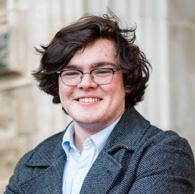

Continued from p.1
just not true. Take last year for example. The two teams’ seasons were more similar than many realize. Both had seven regular season losses. Both finished second in the Big East regular season. Both had a Big East Player of the Year. Both ended the season with an NCAA Tournament appearance, and at least one win. But still, the women were overlooked.
The overarching issue is the double-standard at hand, and it extends beyond just Villanova.
As a rule, women’s basketball programs are overshadowed by their male counterparts. There are some exceptions, at schools like UConn where the women’s team is more decorated than the men’s, but this is rare.
Women’s programs receive less funding, have lower attendance, less games televised on national networks and are generally underappreciated.
To put this into perspective, the Villanova men’s team will have every game televised this year, while the women are only slated to have five of their 31 games on national TV. With one of the top players in the nation on its roster in Maddy Siegrist, Villanova’s games should be a higher priority.
These issues on a national scale are obviously not things that we as students have the power to fix, but we can do something about the double standard on our campus, starting with supporting both teams through every up and down.
In February of 2019, the men fell out of the rankings after multiple Big East losses. But, this didn’t change
the support or attendance at games. In fact The Finn was sold out for the first home game after the AP Poll was announced.
When it comes to the women’s team, people act as if they first need to prove themselves before they are worthy of support. Just because they haven’t won a national championship, which only 15 women’s programs have accomplished in the NCAA Tournament’s 40 years, doesn’t mean they deserve less recognition.
Last year, the Finn reached just over 16% capacity on average for women’s games, while the men sold out all but two of their home games at the Finn.
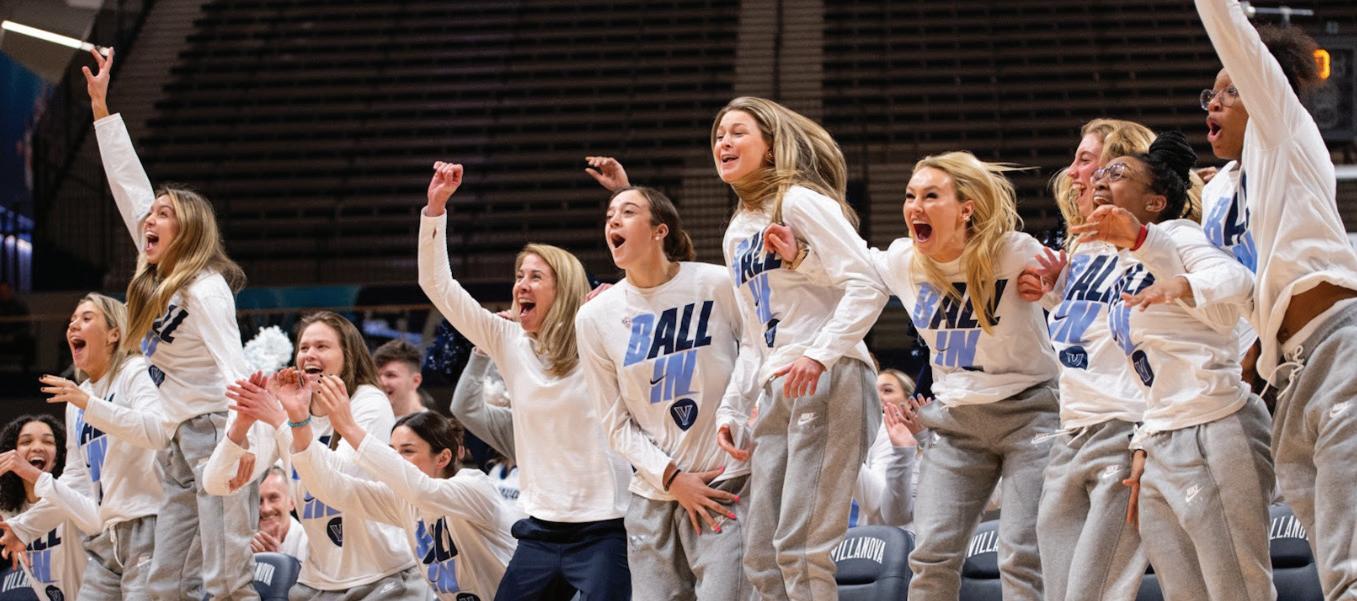
The attendance saw occasional increases, but never more than the 44% for the senior night game against DePaul in February, and this was 20% higher than the second most attended game.
When the team shocked the college basketball world with a win on the road against No.8 UConn in February, the first win of the sort since 1993, there was hope that the recognition and support would increase. But a disappointing 1,405 people
showed up for the team’s Friday night game two days later.
There are ways that the university can work to combat this attendance disparity, with one option being a student lottery points incentive for all women’s games. Quite frankly, this bribe should not be necessary. The recent success and national recognition should be enough. But if that is what it takes to get the students in the door so that they may become invested, then so be it.
Just as everyone knew the name Collin Gillespie last year, everyone should know Maddy Siegrist’s name. Siegrist is the reigning Big East Player of the Year and arguably the best athlete on campus.
Siegrist finished the season ranked second in the nation at 25.9 points per game and broke the 20-year-old Big East scoring record, averaging 27.9 points in conference contests.
After scoring 684 points last season, despite missing six games, Siegrist is on pace to become Villanova’s all time leading scorer, man or woman. That spot is currently held by a woman. Shelly Pennefather (‘87) scored 2,403 points in her career, 165
more than the men’s leader, Kerry Kittles.
Siegrist is already off to a hot start this season, averaging 26.5 points and 13 rebounds to lead the team to a 2-0 start, which has carried it into the 24th spot on the AP Poll. The ‘Cats had high preseason expectations, but a ranking in the first week shows that they are well on their way to exceeding those.
“I don’t think we will be a great surprise this year, with Maddy leading the way,” head coach Denise Dillon said in October. “I would say nationally being known as a team who’s consistent with what we’re doing on both ends of the floor and getting the result because of it.”
The Wildcats were picked to finish third in the Big East in the 2022-23 Preseason Coaches Poll. It is yet another thing they have in common with the men, who were also picked third.
While the preseason poll holds some significance, the women proved last year that they are not always an accurate prediction of the season to come, as they finished second after originally being picked fifth.
Led by Siegrist, the Wildcats are once again ready to prove that they are capable of competing at a national level.
“I want to go as far as we can,” Siegrist said. “I think this year’s gonna be really special and I’m excited to be part of it.”
Now is the time to get on board and support the women’s team. We can’t wait until they pull off another upset like UConn, or for Siegrist to break the record. With the team already growing on the national scale, imagine what could happen if it had a full strength Nova Nation behind it.
Olivia Johnson: Equestrian World Champion
Villanova junior Olivia Johnson started riding horses after her older sister Samantha picked up riding as a kid.
“When I was seven, my sister picked up her friend from a camp, and my sister went into the barn, and she was like ‘Oh my gosh, mom, I want to do what Bella’s doing. I love this,’” Johnson said. “Then it was a year, and then my mom was like, ‘Your sister’s getting into this, she’s going to horse shows, is this something you want to do?’ So then I started. And both of us have never stopped.”
Nine youth world championships and two national championships later, Johnson is still riding. She competes with three horses, Suddenly Blazin’ Hot, Jack’s Lil’ Shiner and Take a Hit.
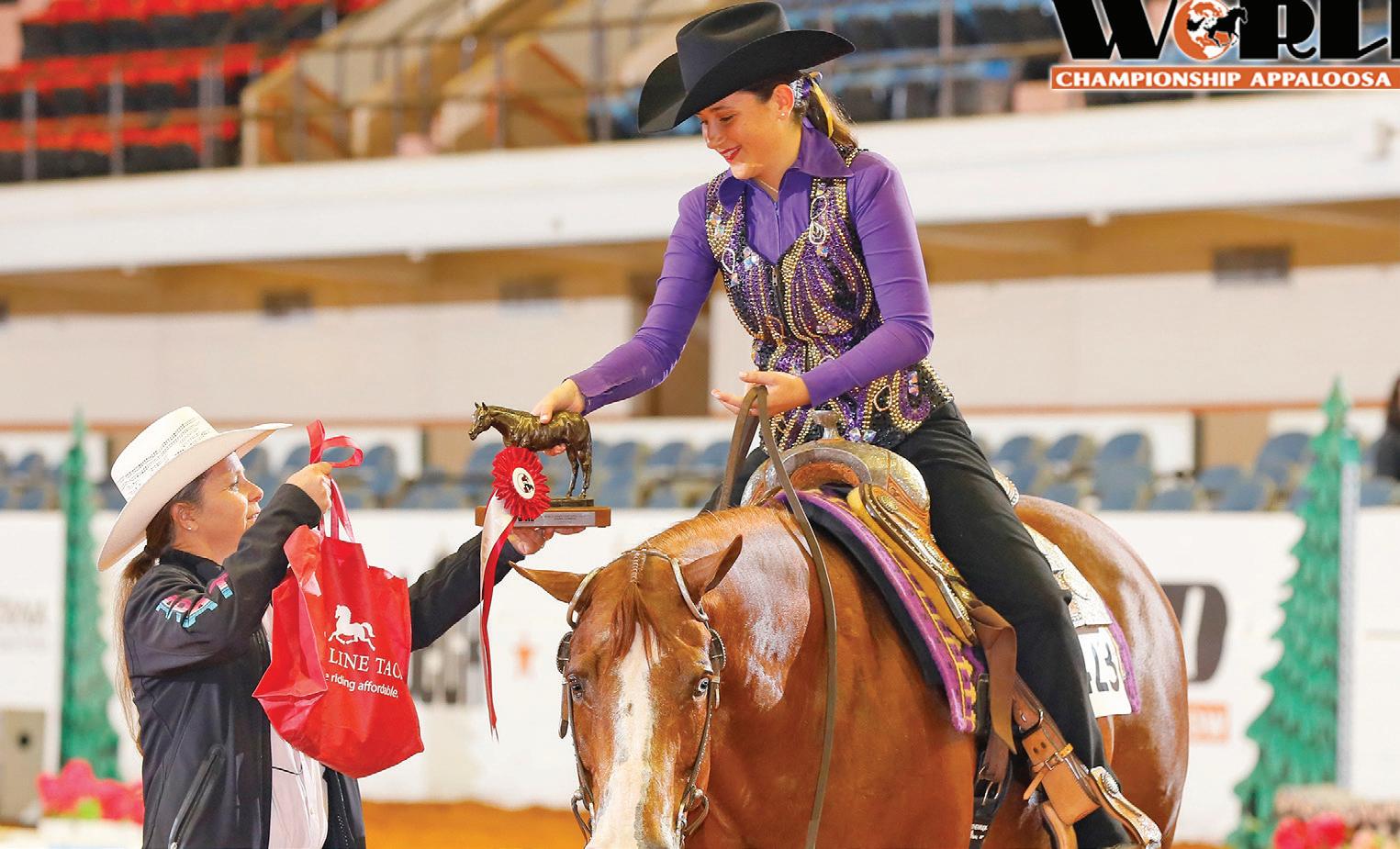
In late October, Johnson competed as an individual at the World Championship Appaloosa Show, where she claimed the reserve world championship in all-around non-pro, and placed top five in all her classes with Suddenly Blazin’ Hot.
Johnson, a Communication major specializing in journalism, is
a part of Villanova’s club English equestrian team.
“It’s kind of interesting because it’s English, my horse is primarily Western,” Johnson said. “I’ve never really jumped before, but with the English team you jump. So, it’s interesting learning different buttons for the horses because you ride them completely differently. Some of the mechanics are still there, but it’s just the way that they carry themselves in the arena. They have their heads a little bit higher and it’s a faster pace. And the judges are looking for dif-
ferent things. So, it’s been a process. Also, [I’ve] never really jumped over standards before. It’s been kind of scary. My parents say, ‘I’ve seen you do the speed events. I don’t necessarily want to see you jump.’”
Johnson said that at times it can be hard to explain exactly how she competes to those who aren’t familiar with equestrian, but that usually a video can help illustrate what it’s like to compete at the level she does.
“I definitely think it’s hard to tell people about it because I feel like you always get the question, ‘Do you
jump? Do you just dodge?’” Johnson said. “ I think it gets confusing explaining what I do to people because I kind of do a little bit of everything. But also none of the things that they exactly think of when they think of riding.”
Johnson is also a Youth Superior Achievement award recipient for accumulating more than 1,000 points. She received the award in her last year as a youth. Johnson was and continues to be heavily involved in the Appaloosa Horse Club, serving as a member of the youth board for three years.
“I think we have some of the best camaraderie and sportsmanship out there in the equine industry.”
Johnson said. “The Appaloosa Horse Club is an extremely welcoming environment because you always have people that are there to cheer you on, no matter if it is your first show or your 30th, and it is why my family has been a big supporter of the club since I was about eight years old. It is also why they encouraged me to be a part of the Youth Board for three years, as a general member and then the Vice President for two years.”
Johnson says her journey with Equestrian isn’t over either.
“I’d love to continue it as long as I can,” Johnson said.
12| The Villanovan Wednesday, November 16, 2022 SPORTS SPORTS
Women’s basketball celebrates on Selection Sunday after receiving its at large bid. Olivia Pasquale/Villanovan Photography
Owen Hewitt Staff Writer
Olivia Johnson accepts her award at the World Championship Appaloosa. Courtesy of Ruehle Photographix LLC
Women’s XC Places Sixth in Regionals
Catherine Browne Staff Writer
Friday morning presented the Penn State Golf Courses with wet and rainy conditions as 26 teams prepared for the NCAA Mid-Atlan tic Regional race. But, these con ditions did not phase the Villanova women’s cross country team, as it chased down sixth place, earning 152 points.
Although the team scored well, the Wildcats did not qualify for the NCAA Championship meet next week, which concludes the season for the Wildcats.
“We were missing some key players…so we didn’t have the success that we normally do in cross country,” head coach Gina Procac cio said. “I thought it was a great opportunity for the younger kids to step up and race in these champion ship meets and get that experience, which was very valuable to them.”
Four of the team’s top five scorers in the 6,000 meter race fin ished in the top 34 spots. But, among the 194 total competitors, Villanova is home to one of the top finishers of the meet, graduate runner Lydia Olivere.
Olivere finished in ninth place with a 20:32.7 time and earned all-region honors for the fourth-time in her outstanding ca reer. This marks Olivere as being the seventh female athlete to be a fourtime all-region performer in school history. Beginning in Olivere’s 2018
season, she has earned all-region honors for four consecutive seasons (2020 did not host any regional meets), making her the first Wildcat to earn four consecutive all-region honors since Emily Lipari between 2010-13.
“[Olivere’s] very consistent, and you can always count on her to be up there leading the team,” Procaccio said.
Olivere’s personal best in the 6,000 meter race was recorded exactly two years ago at the regional meet, where she finished in 20:02.0.
This weekend’s performance is no surprise, as Olivere has been the top Villanova finisher in all four of her appearances this season and has finished in the top 10 in the regional meet all four years.
Olivere is not the only Wild cat who stood out this weekend. Ju nior runner Anna Helwigh finished in 30th place, with a time of 21:19.2.
“I think that was [Helwigh’s] best race,” Procaccio said.
Following behind her in 31st place was graduate runner Ariana Gardizy, finishing in 21:20.5. Soph omore runner Emily Robinson fin ished in 34th, with a time of 21:21.9, and freshman runner Ameila Arrieta made her regional debut placing 53rd in 21:45.3.
Robinson cut her time down by 41 seconds from the same race last year, where she finished in 22:02.4.
“Emily Robinson was a com pletely different runner from a year ago,” Procaccio said.

The team’s top five scorers’ created a spread of 1:13.
Sophomore runner Margaret Carroll and freshman runner Kinsey Pogue rounded out the race for the team. Carroll finished 108th, with a time of 22:53.7, and Pogue marked 115th place in 22:59.0.
Although the team did not qualify to race next weekend in the championship meet, Procaccio re flected positively on the past season.
“I think with the experience of the younger kids this year, it’s go ing to make them even stronger next year,” Procaccio said. “I think the future of the program looks really good.”
The cross country runners will rest until they begin focusing on the indoor season when they are joined by their teammates compet ing in the distance, sprint, jump and throw events.
January marks the beginning of the indoor track and field season for the Wildcats, and the team is starting their training season off on a high note.
“They did a time trial last week, and they looked right on track,” Procaccio said.
As the 2022 cross country season comes to a close, the team looks forward to its winter competi tions in the indoor season.
“I think there [were] a lot of good takeaways from the season,” Procaccio said. “Even though it might not have looked good on pa per, I think the future of what I see is really exciting for next year.”
WEEKLY SCOREBOARD
Nov. 9 - Nov. 15
Wednesday, November 9
Women’s Swim @ Penn 112-186 L
Men’s Swim @ Penn 110-182 L
Thursday, November 10
Volleyball vs. Georgetown 3-2 W
Friday, November 11
Women’s XC Regionals 6th of 26
Men’s XC Regionals 1st of 26
Women’s Basketball @ Princeton 69-59 W
Men’s Basketball @ Temple 64-68 L
Saturday, November 12 Football @ William & Mary 12-45 L
Volleyball vs. Butler 3-2 W
Sunday, November 13 None
Monday, November 14
Men’s Basketball vs. Delaware St. 60-50 W
Tuesday, November 15 None
Anders Said It: Men’s XC is Best Team on Campus
Anders Pryor Sports Columnist
Villanova’s Men’s Cross Country team has dominated all competition put before them in the past three weeks and have brought home both another Big East title, a Mid-Atlantic Regional champi onship, and crowned a Mid-At lantic individual champion. This kind of success is common for the team, and its continuous produc tion of elite results is a credit to the culture and history of the pro gram. Men’s cross country is the most dominant team on campus right now and it may not be close.
Liam Murphy is a redshirt sophomore from Millstone, New Jersey and has won just about every award you can think of from Mid-Atlantic Regional honors in 2021, all Big East First Team in 2022, and winning Big East Male Athlete of the Week this past week. Now, he adds Mid-Atlantic Regional champion to his resume after finishing first last Friday. He covered the course in 29:52.6 and is just the seventh male athlete to win the region for the Wildcats.
“Liam is very talented and he put the work in this past sum mer,” said head coach Marcus O’Sullivan. “Terrific performance by him, he’s grown and matured the last year.”
Murphy is obviously used to success. Two weeks ago, Vil lanova snagged its eight Big East title and he was a big part in leading the charge finishing third
overall. Murphy was one of five Wildcat runners to finish in the top ten along with Haftu Strintzos (2nd), Charlie O’Donovan (5th), Jack Jennings (7th), and Josh Phil lips (10th). That victory, combined with an excellent performance in regions, has made an excellent couple weeks for the team and has earned admiration from the coach.
“Terrific team effort by all of them and very exciting to see
them do so well,” said O’Sullivan. “They are in terrific shape and they were patient throughout the race.”
In the excitement of the success of Villanova basketball, many forget that cross country is actually Villanova’s most dec orated sport. Men’s cross coun try carries four NCAA National Championships to its name in 1966, 1967, 1968 and 1970. It also
has two NCAA National Individu al champions in Victor Zwolak in 1963 and Patrick Tiernan in 2016. That historical level of achievement doesn’t even include women’s cross country, which boasts nine NCAA National Championships and six NCAA Individual Champions.
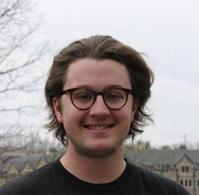
Despite a golden medal winning performance in his in dividual, Liam Murphy did not reach qualification for competing in the individual championship for the Mid-Atlantic Region in the NCAA Championship. But his impact in the team-racing event should be critical for having success against the nation’s best programs.

The automatic qualifying pool Villanova will be facing will consist of some of the nation’s most elite teams in Arkansas, North Carolina, Notre Dame, Stanford and Texas among others, but the ‘Cats are ready for the challenge.
No Villanova team has strung together consistent success quite like cross country. If they can make noise in the National Championship on Nov. 19, they should get the attention they deserve for the historical and current success. If they can pull off an impressive finish in team competition, everyone on campus should rightfully celebrate. But let’s remember that this success is near constant for this team and we should give them the respect they deserve regardless of how they finish.
SPORTS Wednesday, November 16, 2022 The Villanovan | 13
Liam Murphy (abova) won regionals with a time of 29:52.6. Courtesy of Villanova Athletics
Mitchell, de Ruijter Selected to All-Big East Second Team
Brooke Ackerman Staff Writer
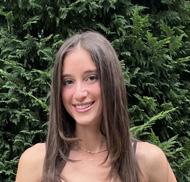
Every team has its stars, its go-to players, its standouts, the ones who make big plays and put up big stats. But for the two stars of the women’s field hockey, juniors Meghan Mitchell and Sabine de Rui jter, they don’t care as much about being the stars on the team as they care about the team itself.
This past season, Mitchell led the team with 22 points, scoring nine goals, dishing out four assists and tallying two game winning goals.
As for de Ruijter, she was a defensive force in the back, leading the team in most minutes played. But she too put up stats, getting involved in the attack with seven goals and five assists.
Head coach Joanie Milhous reflected first on Mitchell, calling her a “role model” for the other players because of her work ethic.
“She’s literally the hardest working player I’ve ever coached,” Milhous said.
As for de Ruijter, Milhous was impressed with how far she had come this past season.
“I saw tremendous growth in her play this year,” Milhous said. “Sabine is just a solid player for us, and she helps us out both offensively and defensively.”
It wasn’t just Milhous who recognized the success of both the girls. It was also the Big East. For their efforts this past season, both Mitchell and de Ruijter were selected
to the All Big East Second Team.
But for the two stars, the ac colade means nothing without their teammates.
“Obviously it’s a very big honor to be recognized by the Big East, but this award is more so a reflection of the entire team’s effort,” Mitchell said. “A lot of that award is based on statistics and goals, stuff like that, but those goals come from the play developing in the backfield and everyone contributing to finishing.”
de Ruijeter agreed. “For me, all my goals came off a penalty corner or a stroke, and it’s important to remember who caused the corner, who caused the stroke. I could never do it individually, we should see this as an honor for the team and for our teammates.”
While it was this humble mentality that helped foster the team culture this past season, the roles of these two players were critical for the team every time they stepped onto the field.
“[The team] relied on her (Mitchell) to either get it done, or create something for someone else to get it done,” Milhous said. “She’s a go-to player for us.”
As for de Ruijter in the back, Milhous described her as a “sponge.”
“She really brought a whole new dimension to her game that was of such value to us in her defensive role,” Milhous said of de Ruijter.” “It’s a huge role, a lot of pressure, and I thought she did a great job with it.”
With all eyes on the two juniors, and Milhous and their
teammates looking to them to make magic happen, dealing with pressure is their second nature. And yet, iron ically, they don’t see it as pressure at all. They see it as an opportunity for teamwork.
“I love those exciting mo ments in overtime or in the fourth quarter when we need a goal,” Mitchell said. “But I would never call that pressure because I know there’s a bunch of teammates around me and we are all working together…it’s a collective effort of everyone.”
On the defensive side of the game, de Ruijter doesn’t feel the pressure either to keep the ball out of their zone.
“I’ve been playing with these girls since my freshman year, and we’re just such a well-oiled ma chine,” de Ruijter said. “I’ve never seen it as pressure, we just know how to work off each other.”
With this team-first mentali ty, both of these rising seniors don’t necessarily have a desire to rack up their individual accolades. Instead, they have one team-oriented goal for next season: go to the Big East Tournament.
“As a senior, I wanna be a good leader, a good teammate, but I also want to give it everything,” Mitchell said. “I want to go to the Big East.”
But, both Mitchell and de Ruijter are aware that this goal can’t be accomplished without a good team dynamic.
“What I really wanna do is try to be an example for the girls coming in,” de Ruijter added. “[Last
season] everyone was so committed, and it was awesome to see from day one. So, for next season, that’s defi nitely something I want to do too.”
As Mitchell and de Ruijter look toward their final season in the Wildcat uniform, they first have goals for the offseason.
“The spring is all about figuring out what skills and technical aspects you need to work on because you have so much time to practice,’’ Mitchell said. “And then individually, I want to focus on finishing in the circle and just growing in 2v1 situa tions as a player to grow my tactical base.”
“I wanna work on the de fensive end of the field,” de Ruijter added. “I want to fine tune my 1v1 defense and try to create peace when it’s chaotic in our circle in order to set things up quickly.”
With these objectives in mind, Mitchell and de Rujter look to the off-season as a time of growth for themselves, both on and off the field.
“Over everything, I just want to be a role model on and off the field,” de Ruijter said. “I remember my freshman year, I would go to the seniors if I had stuff going on outside field hockey, and I want freshmen, or any girl on the team, to feel like they can come to me.”
“I feel the same way,” Mitch ell agreed. “Off the field, I want to be someone that can show [the younger girls] the ropes a little bit in terms of Villanova. All I wanna do is be a good role model and team mate so we can set ourselves up for a successful season.”
Volleyball Beats Georgetown on Senior Night
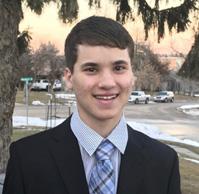
 Zac Tipton Staff Writer
Zac Tipton Staff Writer
For the first time since 2017, Villanova volleyball won both games during the weekend in five sets.
This past weekend, in the last home matches of the year, the Wildcats did what they had to and pulled off some miraculous points to get two wins. First, over the last place team in the Big East, George town, followed by Butler, which just secured a spot in the Big East Tour nament. This moved Villanova’s conference record to 5-11.
These two games were the exact opposite of each other. In the Georgetown game, Villanova was able to get off to a quick 2-0 set lead, but despite the team leading big late in each of the next two sets, Villano va surrendered two games to force a fifth set, where Villanova would eventually win. Villanova coach Josh Steinbach obviously wanted to win earlier but was glad they got it done in the fifth.
“We haven’t had a lot of success in close sets this season,” Steinbach said. “We had a lead in third and a huge lead in the fourth. We should’ve closed those things out, but didn’t play well down the stretch. But, the biggest thing to me was we served and passed better all weekend long, and gave ourselves better looks in that match.”
The Wildcats had a 21-17 lead in both sets and lost them both, but in the fourth, they had a 17-11
lead at one point, thanks to a hot start, but still couldn’t finish. They nearly blew a big advantage in the fifth too, being up 10-5 before allow ing five straight points, but two kills of 12 total from junior Riley Homer and another from freshman Tara Garvey, one of her 14, made sure that they would not finish last in the Big East this year.
However, the Butler game was the exact opposite. Butler won the first two sets despite Villanova having leads in both. When it looked over, the Wildcats fought back and won the next three sets to secure their second win of the weekend.
Steinbach knew how crazy the Butler game was, but he wasn’t surprised by the outcome.
“I think it comes down to the fact that internally, we don’t think we are that far away from being a good team,” Steinbach said. “We
expect to beat Butler, but we just had not made plays at the import ant times this year. We had chances to win in almost every match we’ve played this year versus UConn, Butler and Xavier. We feel like we’ve played with the best teams, just hav en’t been able to finish sets. Shoot, I don’t think Butler played their best, but we took advantage and finally finished sets.”
The story of the Butler game was the seniors. It was Senior Night for five of the players: Mad die Schieder, Izzy Plummer, Belle Morgan, Anastasia Galanou and Kathleen Johnson. Johnson didn’t play due to an injury, but the rest got a lot of possessions in this game. They didn’t just have their moment either. They contributed in big ways for this team, especially in clutch moments.
Schieder finished with two
aces and 10 digs. Morgan finished with 39 assists and 10 digs. Plummer finished with two kills, while Gala nou had six kills.
“I thought the one that had the biggest impact was Mad die Schieder,” Steinbach said. “I thought she played really well. I thought she served the ball well, dug the ball well, and I thought she made a bunch of big plays at big times. Belle had some great finds all game, especially to Kiera [Booth]. Izzy [Plummer] has been getting better throughout the year, and her two kills were both huge in huge moments, including the one that gave us the separation we needed in the fifth set. For Anastasia [Gala nou] to get in there and take some big swings was great.”
It was an incredible effort for the seniors, who played in their last matches at home this weekend, but it was a team effort all together, with incredible play from junior Taryn Whittingham and sophomore Rose Crist providing some incredible plays in clutch moments.
The Wildcats finish their season on the road versus St. John’s and Seton Hall. Villanova shocked St. John’s in Jake Nevin earlier in the season, while Seton Hall defeated the Wildcats. It will be a couple of important matches to build momen tum heading into the offseason.
Looking ahead, the Wildcats are only losing one major contrib utor this year in Morgan, so they will be trying to establish themselves now to prepare the young group for a comeback year next year.
Wednesday, November 16, 2022 SPORTS
14 | The Villanovan
Volleyball honors five seniors on Senior Night. Courtesy of Villanova Athletics
THE BACKPAGE
Across
2. trendy hair piece to pin up hair
4. a trendy drink tumbler, also the championship trophy awarded annually to the NHL playoff champion
7. plaid button-up shirt that is popular in the fall
9. beginning of the holiday shopping season
10. returning Yankee that recently accepted a multi-year deal
13. beginning of the online holiday shopping season
16. ticket site that off ered Capital One presale for Taylor Swift’s Midnights tour


17. Associate Editor-In-Chief of The Villanovan (see pg. 2)
19. a popular Oreo variation
Down
1. store that sponsors the NYC Thanksgiving Day parade
3. SNL comedian rumored to be dating model Emily Ratajkowski
5. Digital Editor of The Villanovan (see @ thevillanovan on instagram)

6. fan of show Glee
8. 2000s teen show with iconic Thanksgiving episode
9. artist with nine Grammy nominations, ties with Jay-Z for most nominations in history
11. tree decoration
12. zodiac sign from October 23-November 21
14. popular candle brand sold in most gift shops


15. crypto trading fi rm that recently crashed 18. fi rst president to pardon a Turkey

ASK THE VILLANOVAN

“I didn’t get senior housing, and now my roomates and I are freaking out. What should we do moving forward? How fast do I have to fi nd another option?”
First of all, don’t worry. This has been happening to seniors for years, and while it feels like the end of the world now, everything ends up working out in the end.
Depending on your position on the waitlist, there may still be a chance that you could get on-campus housing. However, it is worthwhile to make other arragements just in case.
If you are looking for an apartment-style living space, The Villas at Bryn Mawr could be a great option. They off er one and two bedroom apartments at similar cost to Villanova housing.
Obviously, off -campus is sometimes not as convenient as living on-campus, especially due to the driving situation. However, Villanova runs a shuttle on weekdays that is super helpful. Again, don’t worry and good luck.
“How
awkward transitional weather?
always starts out cold but then I end up getting super hot throughout the day. What should I do?”
Obviously the weather has been all over the place recently. With 70 degree temperatures one day and 40 degree temperatures the next day, it feels impossible to dress appropriately.
However, there are some techniques that could be helpful during this weird couple of weeks.
Layers will be your best friend. Dressing in multiple layers helps fi ght the cold in the morning, however, if it gets too hot during the day you can easily shed them.
Also, light sweather material is the best for this kind of weather. It provides some warmth but is still light and breathable.
Make sure you have a winter coat handy just in case there is a cold front.
Otherwise, just try to make it through this weird time and it will be winter weather soon.
Wednesday, November 16, 2022 The Villanovan | 15 THE BACKPAGE
do I dress for this
It













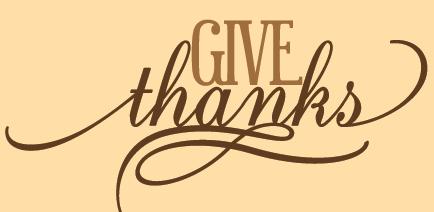



Villanova Dining Services VILLANOVA DINING SERVICES wishing you a Happy Thanksgiving! Please visit our website for a complete list of dining hours of operation during Thanksgiving Break. http://www.villanova.edu/villanova/services/dining/hours/thanksgiving.html












 Sarah Sweeney Co-News Editor
Sarah Sweeney Co-News Editor































 Brendan King Staff Writer
Brendan King Staff Writer
 Yulin Mao Staff Writer
Yulin Mao Staff Writer




















 Zac Tipton Staff Writer
Zac Tipton Staff Writer












